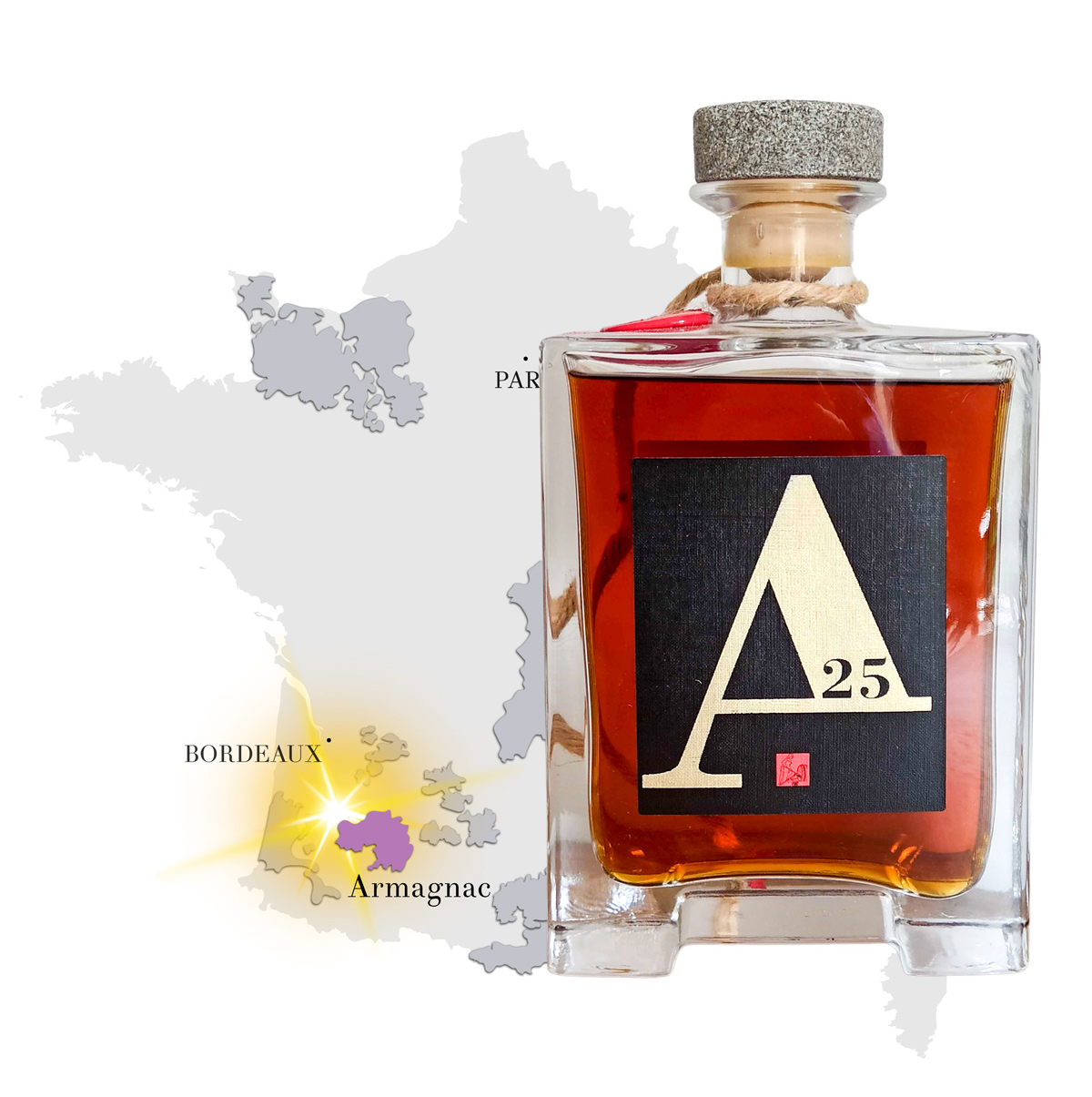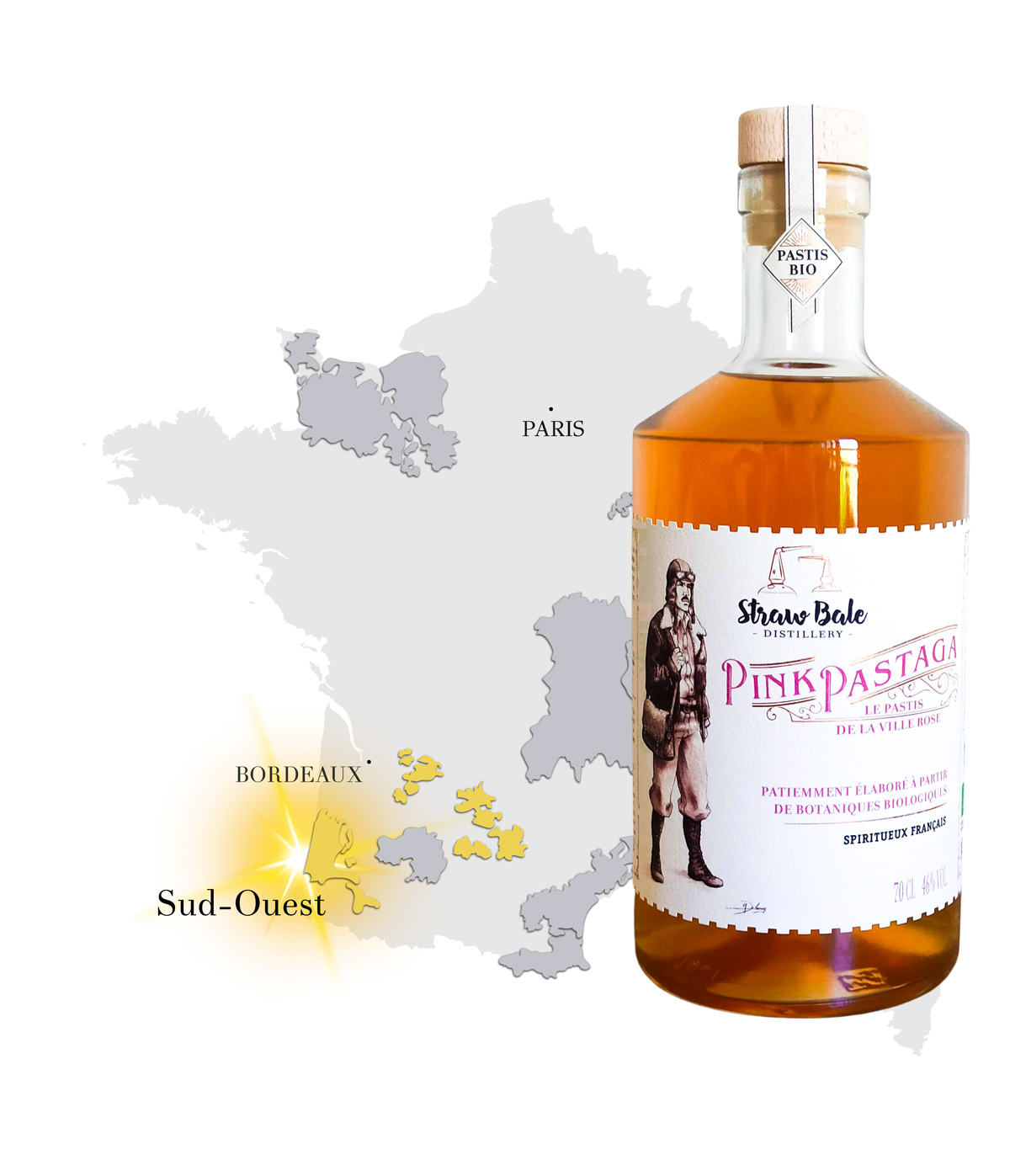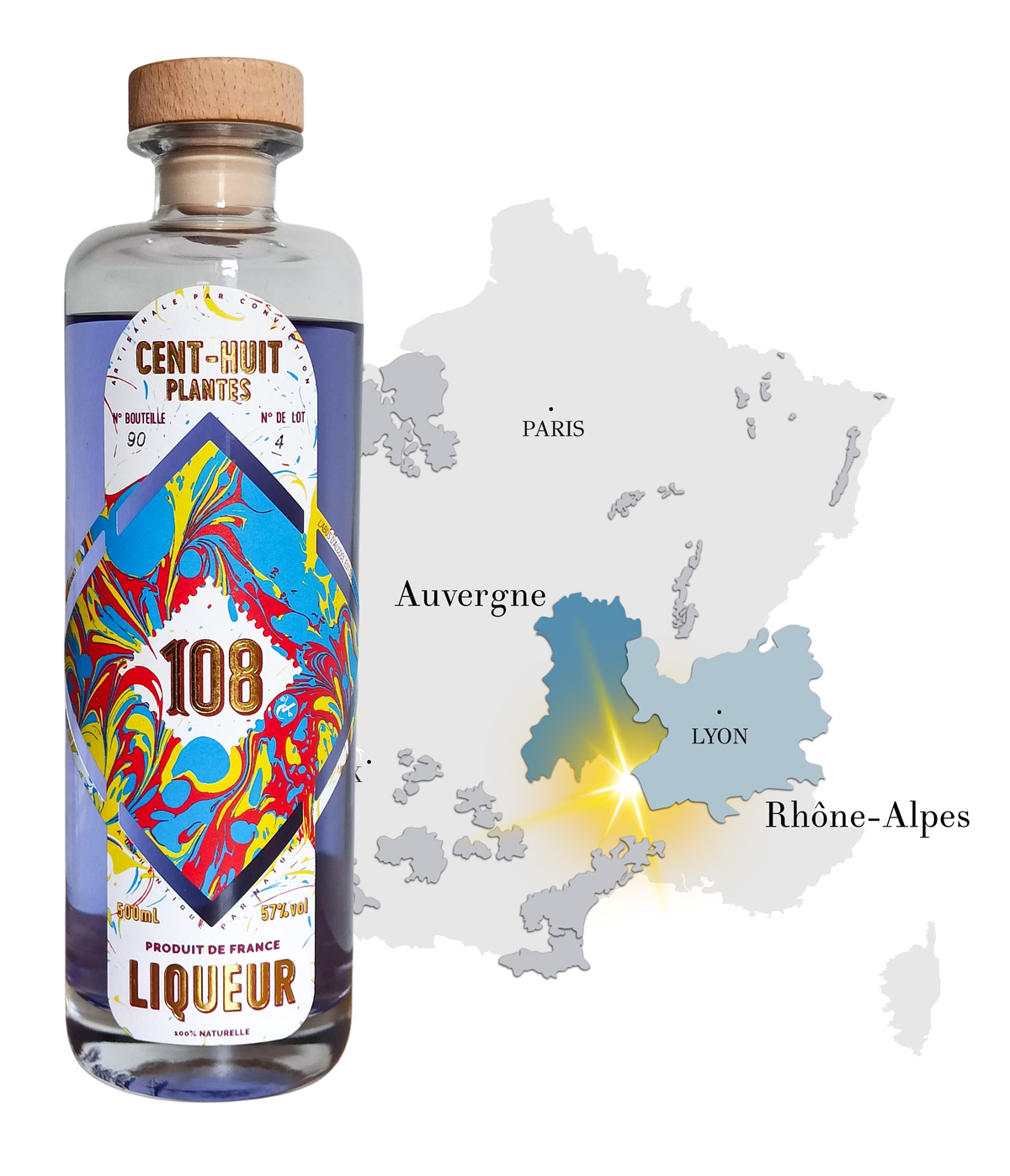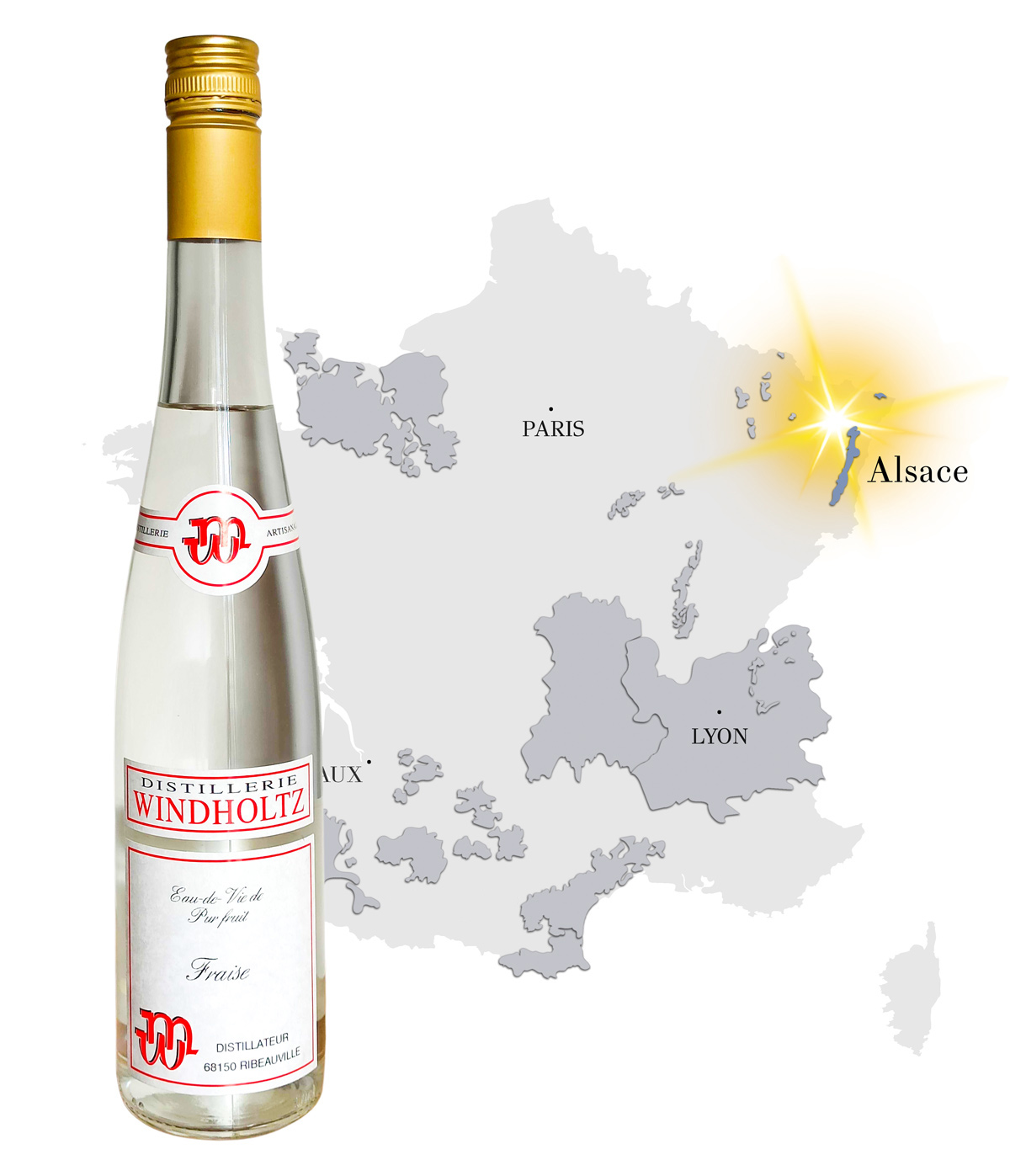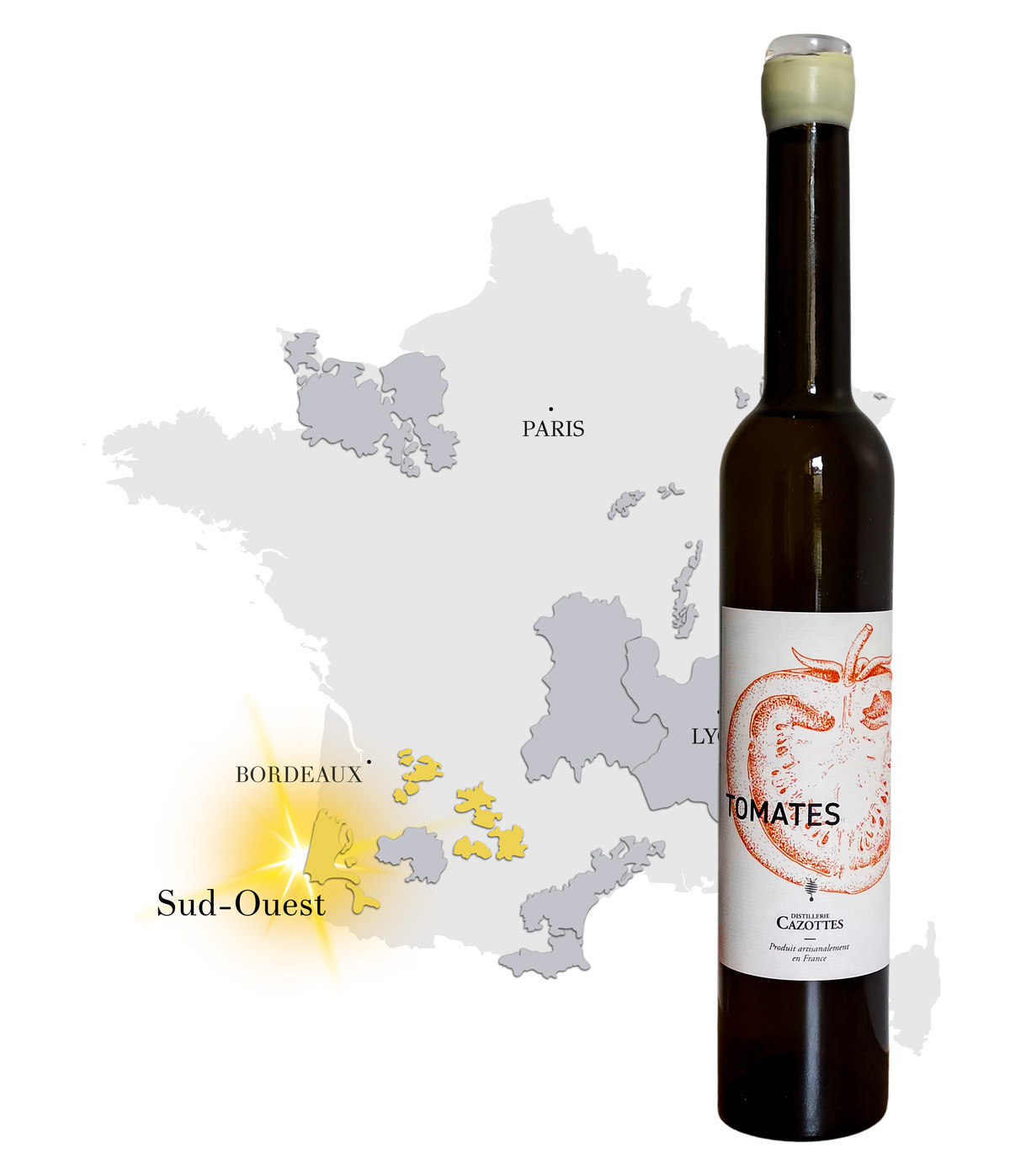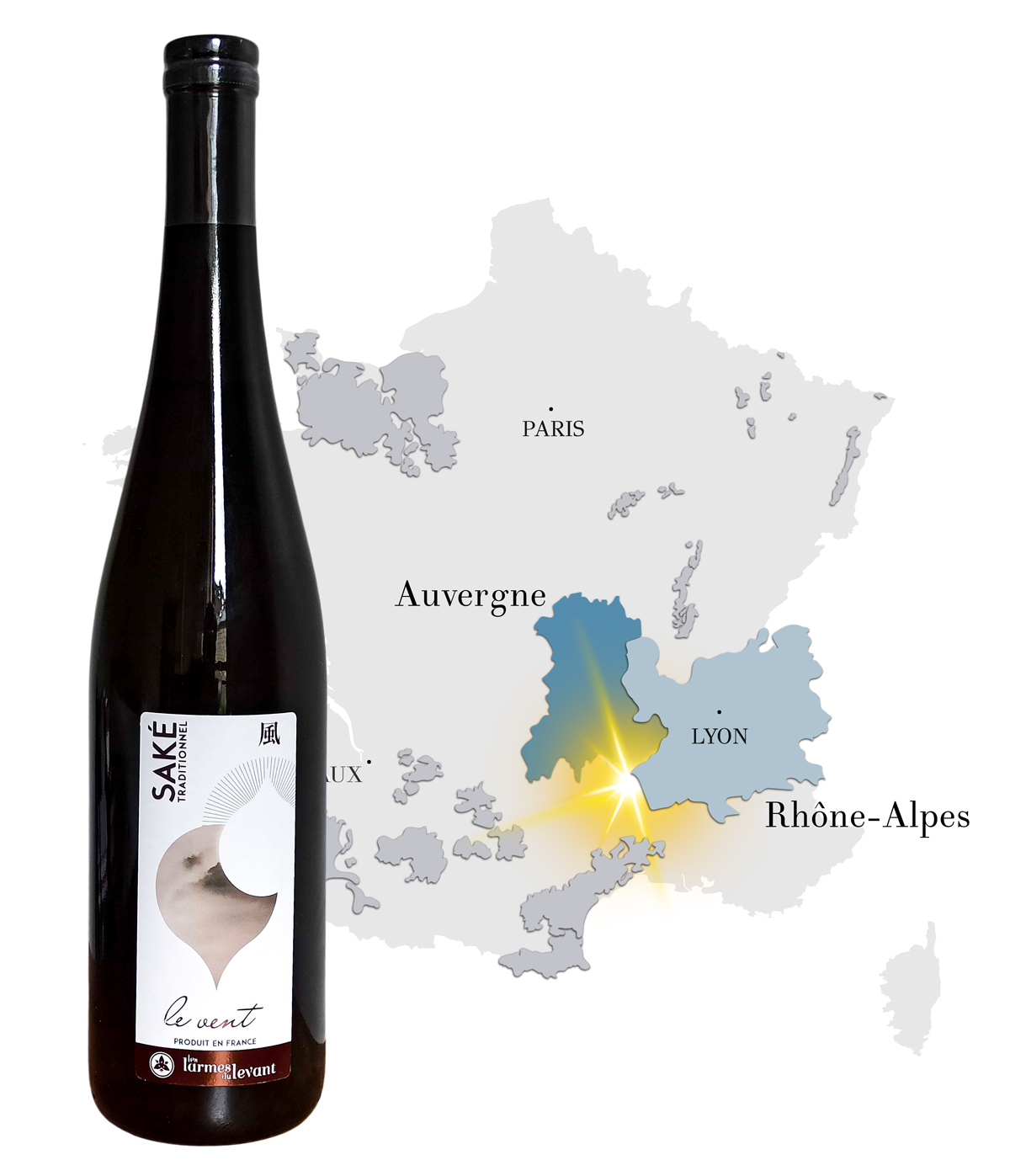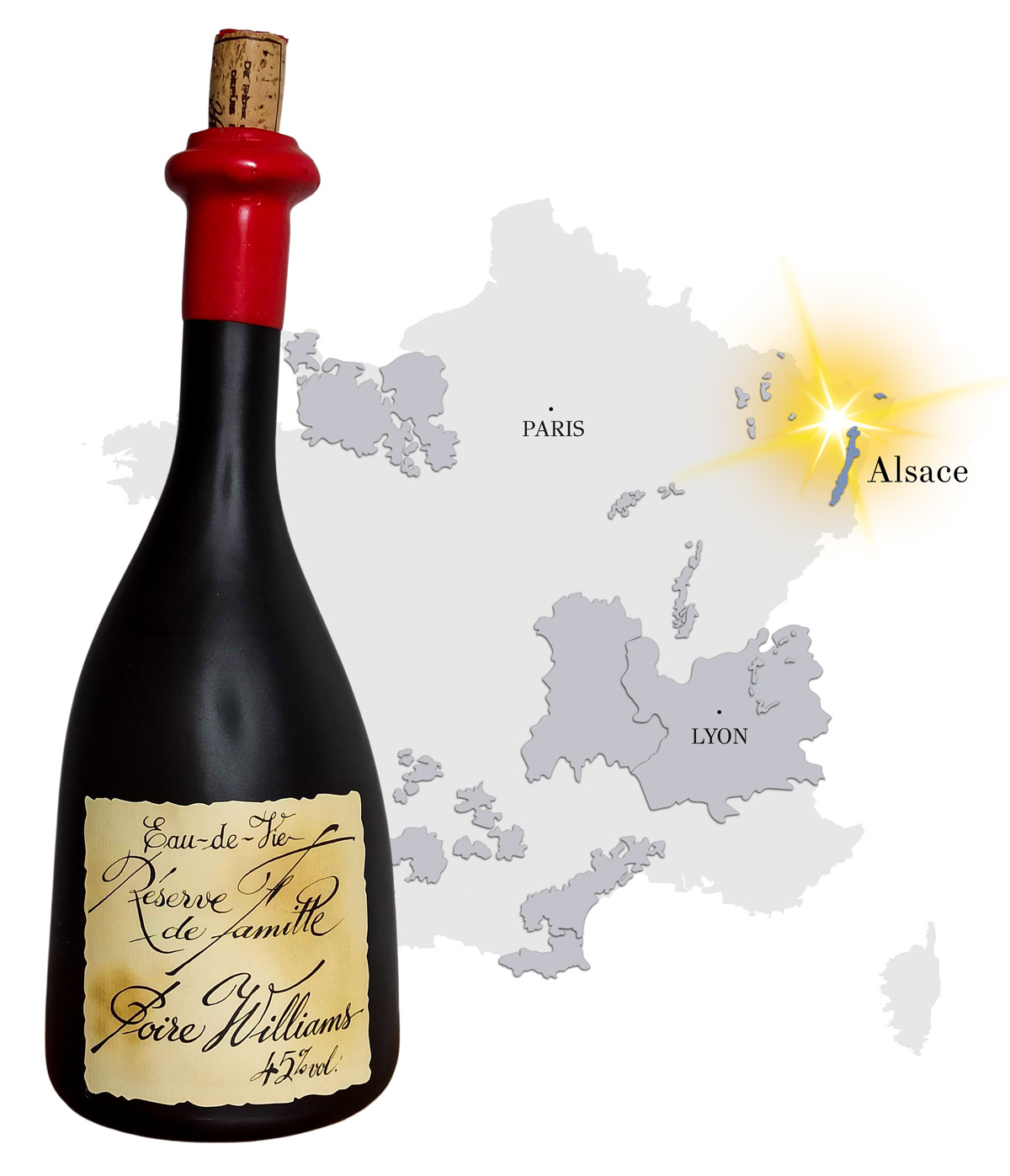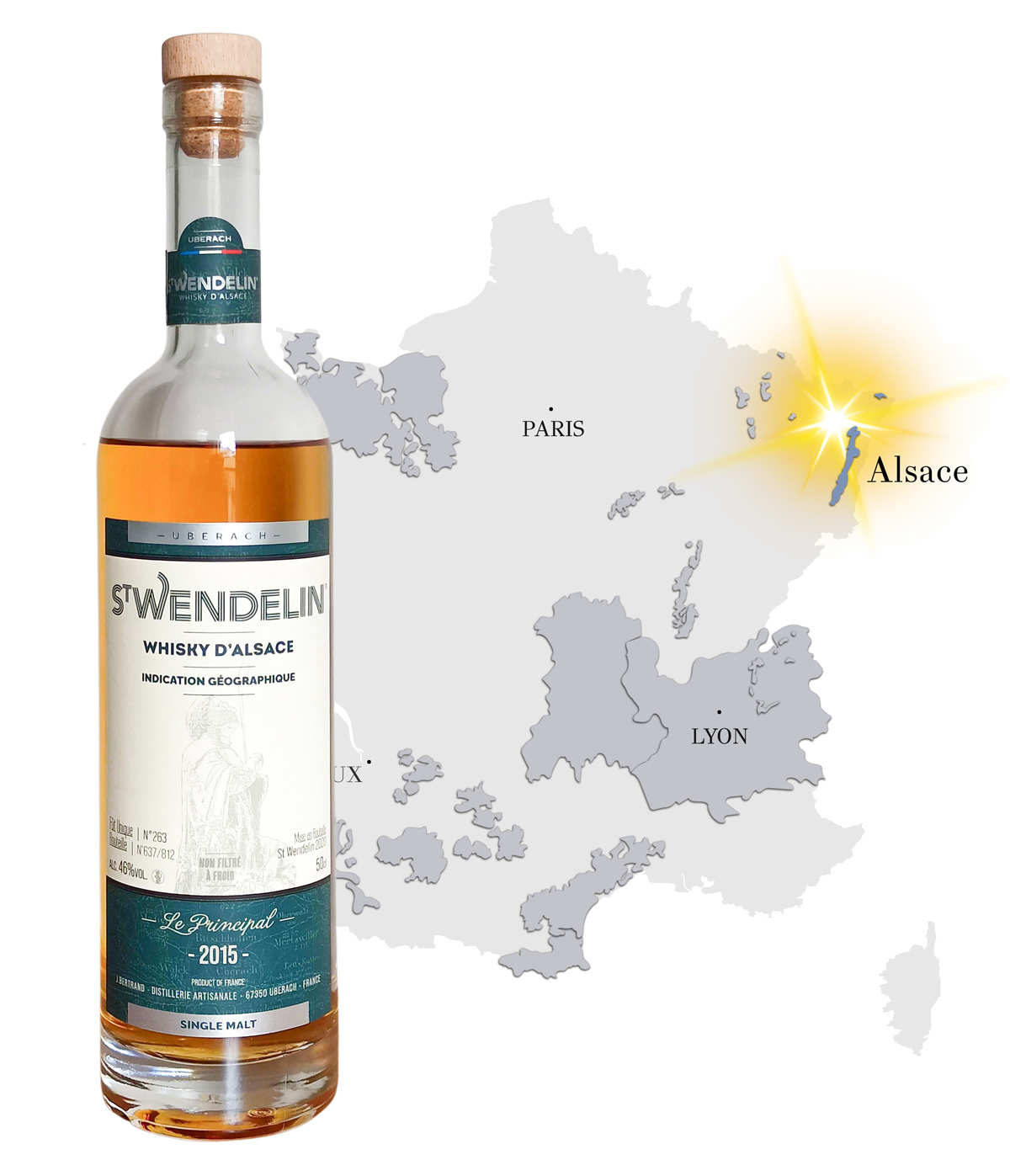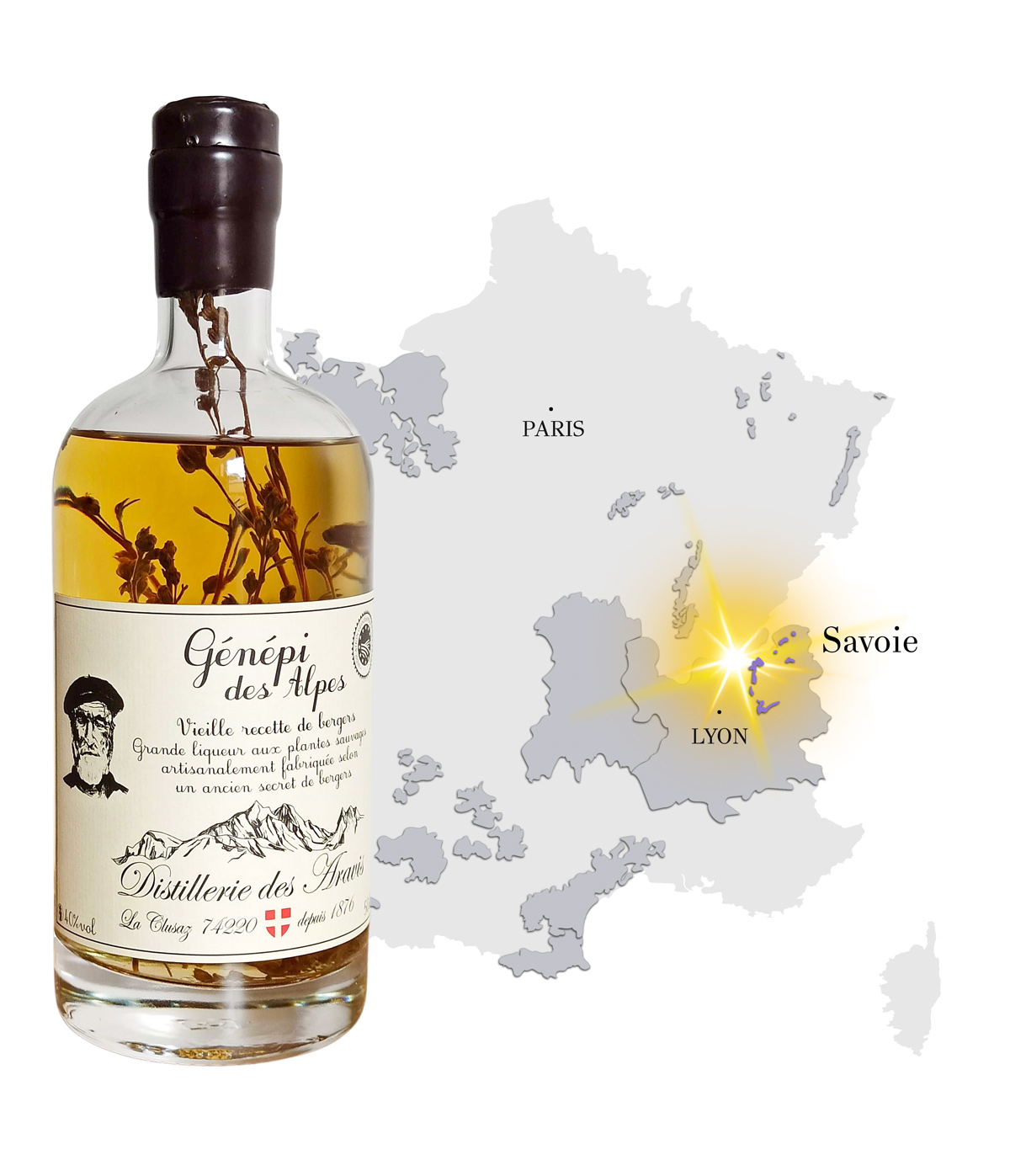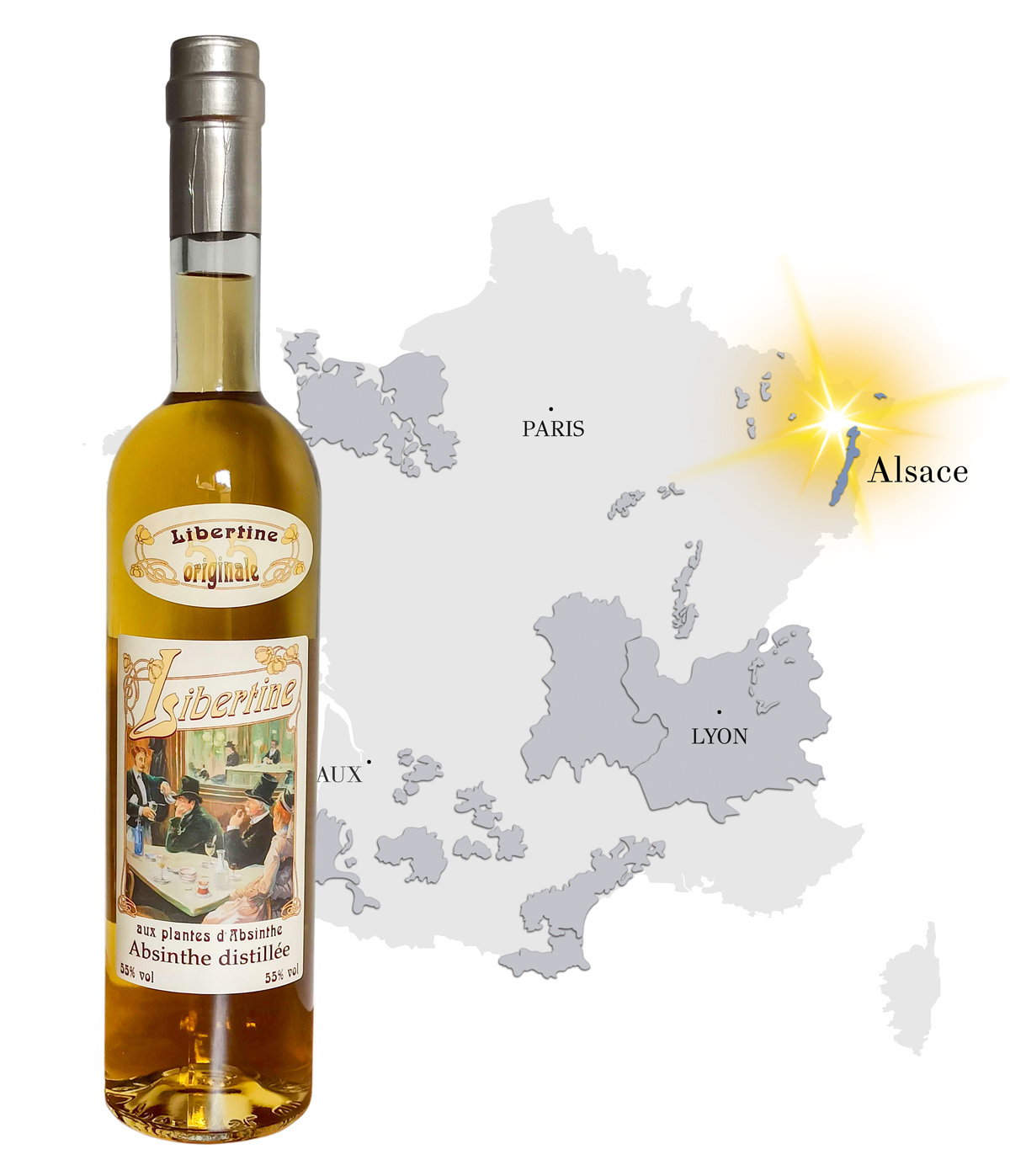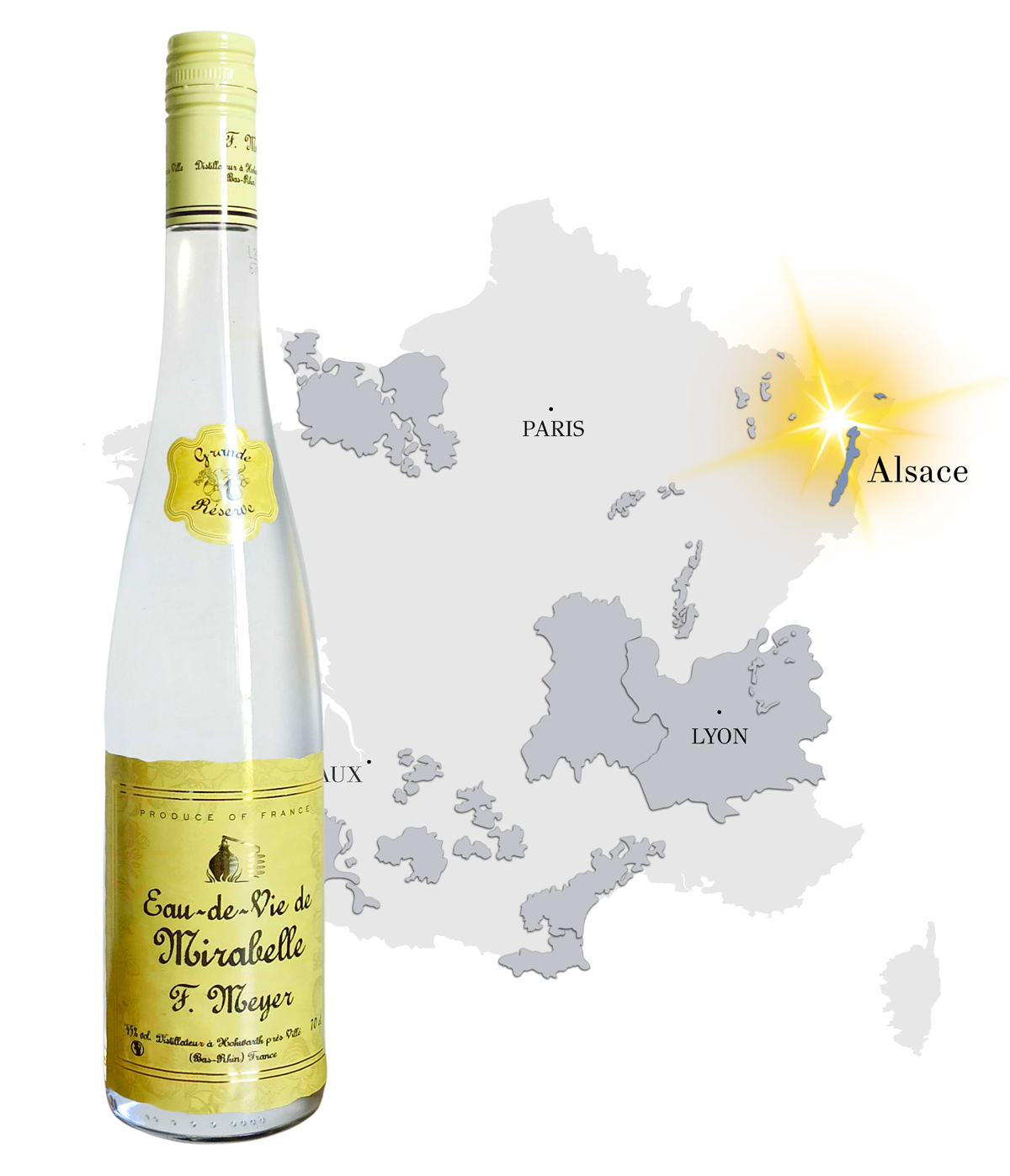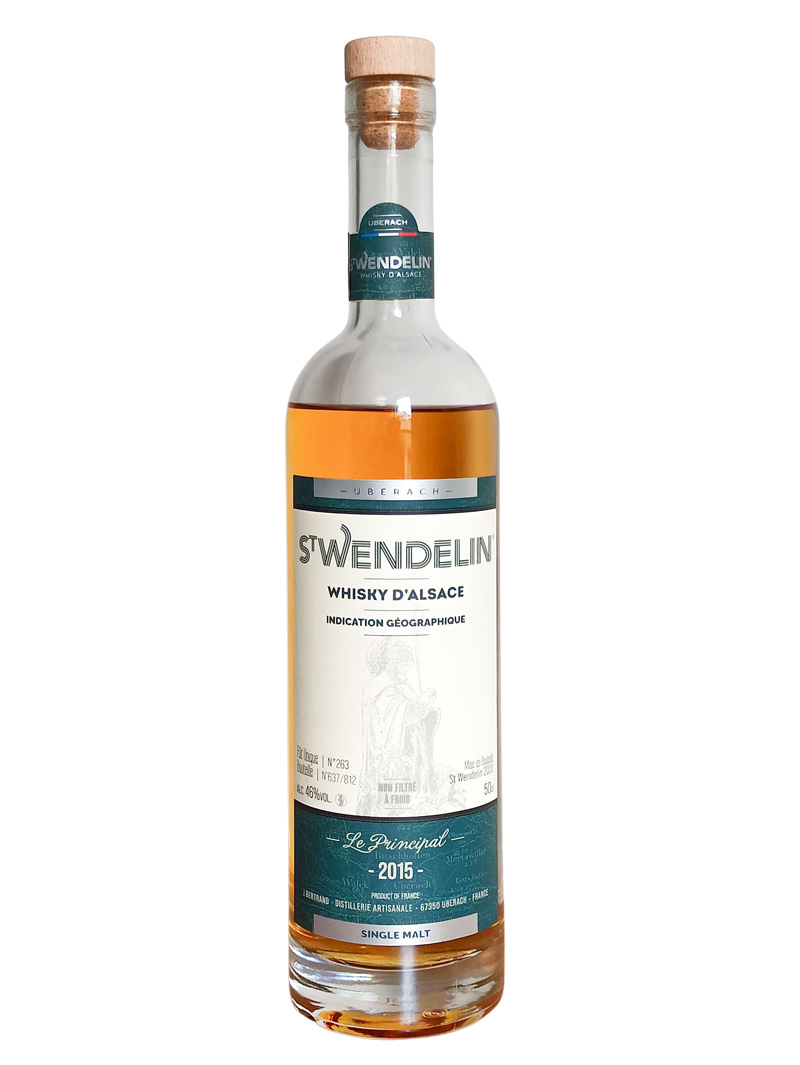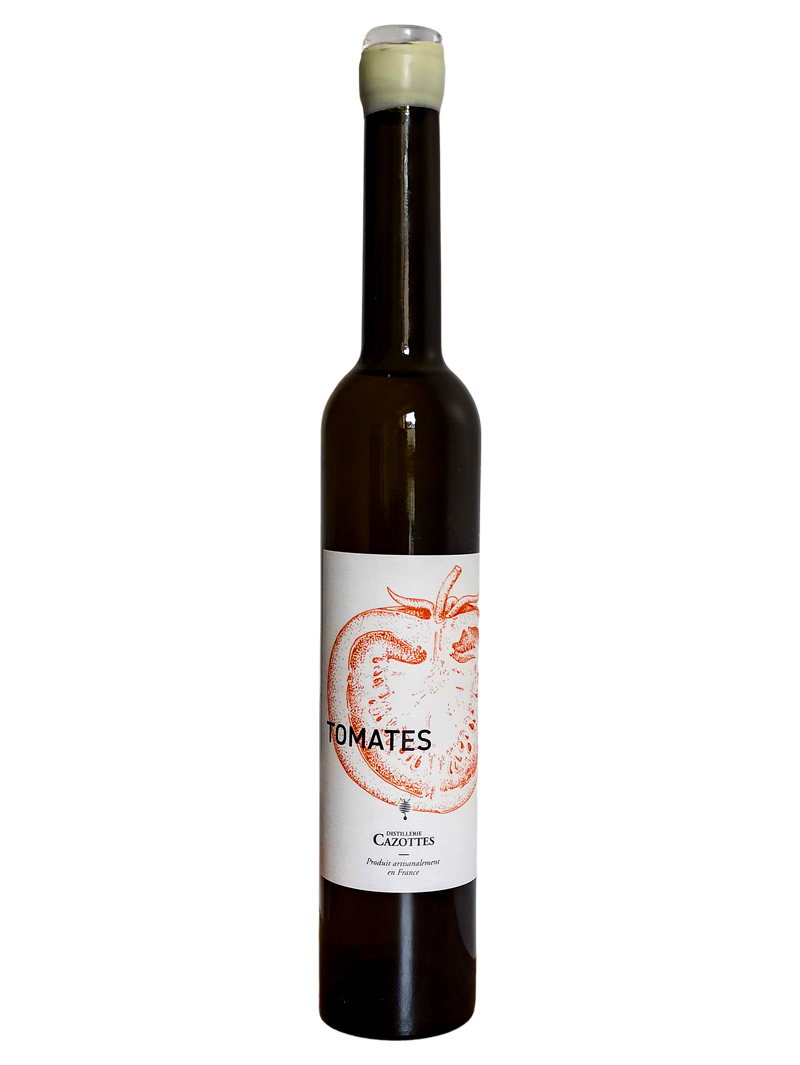
Bonjour Drinks Selection
A Tour de France of French drinks
France is the source of the world's finest drinks. We set out from our home in Cognac to explore France region-by-region, spirit-by-spirit. We selected the best that French drinks has to offer.
We've tasted many, now we present to you our very first Bonjour Drinks selection, with a catalog of other products from each producer's range (sorry, no images available for all):
18 bottles
15 drinks categories
10 regions
Bonjour, bienvenue, and cheers!
Shipped from France directly to your doorstep (Info)


We've tasted many, now we present to you our very first Bonjour Drinks selection, with a catalog of other products from each producer's range (sorry, no images available for all):
18 bottles – 15 drinks categories – 10 regions
Bonjour, bienvenue, and cheers!
We've tasted many, now we present to you our very first Bonjour Drinks selection, with a catalog of other products from each producer's range (sorry, no images available for all):
18 bottles – 15 drinks categories – 10 regions
Shipped from France directly to your doorstep (Info)



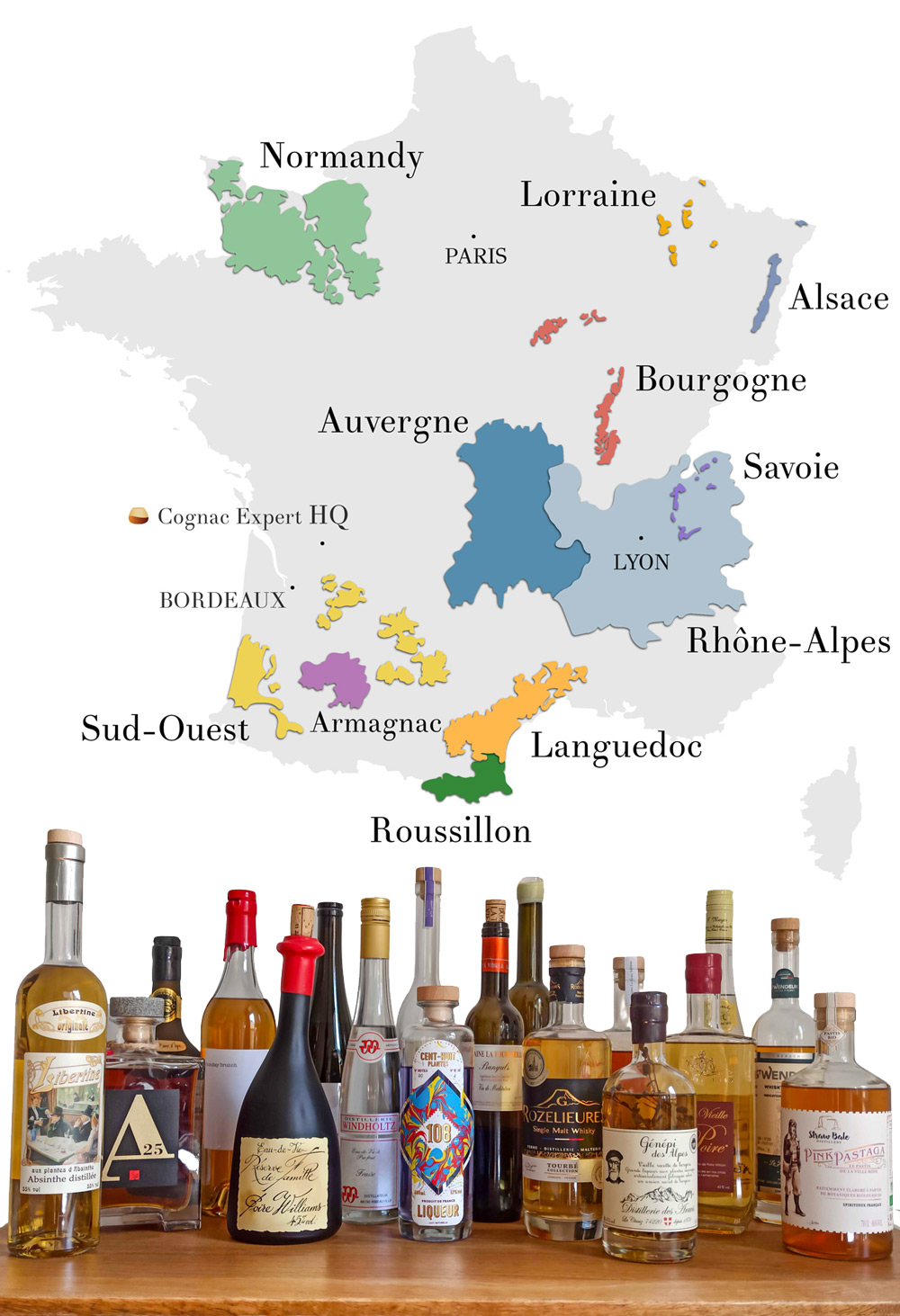
A Tour de France of French drinks
France is the source of the world's finest drinks. We set out from our home in Cognac to explore France region-by-region, spirit-by-spirit. We selected the best that French drinks has to offer.
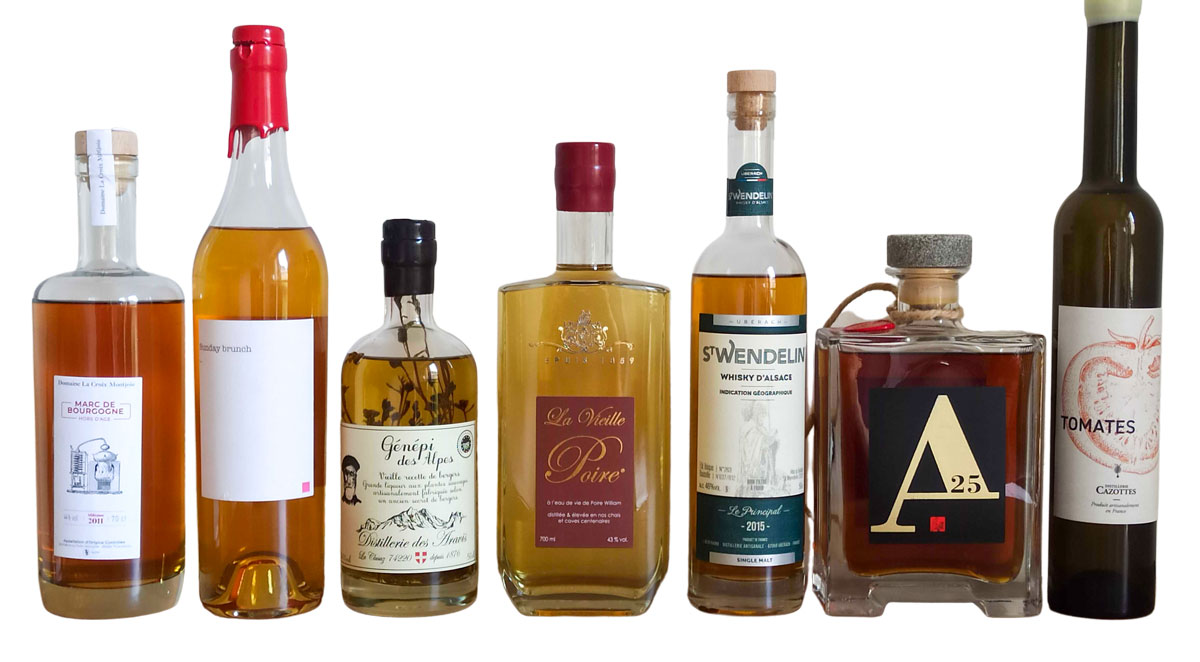
- Aurian Armagnac A25
- Gin d'Avril
- Straw Bale Pastis
- Chartreuse 108 Plantes
- Marc de Bourgogne
- Windholtz Eau de vie Fraise
- Liqueur de Tomates
- Larmes du Levant Saké
- Lehmann Eau de vie Poire Williams
- Le Père Jules Calvados
- St. Wendelin Whisky
- Genepi Liqueur
- Absinthe Originale 55%
- Vin de Meditation
- Meyer Eau de vie Mirabelle
- Rozelieures Whisky
- Aurian Sunday Brunch
- Miscault Eau de vie Poire
Bonjourdrinks.com by the team of




Gin d’Avril
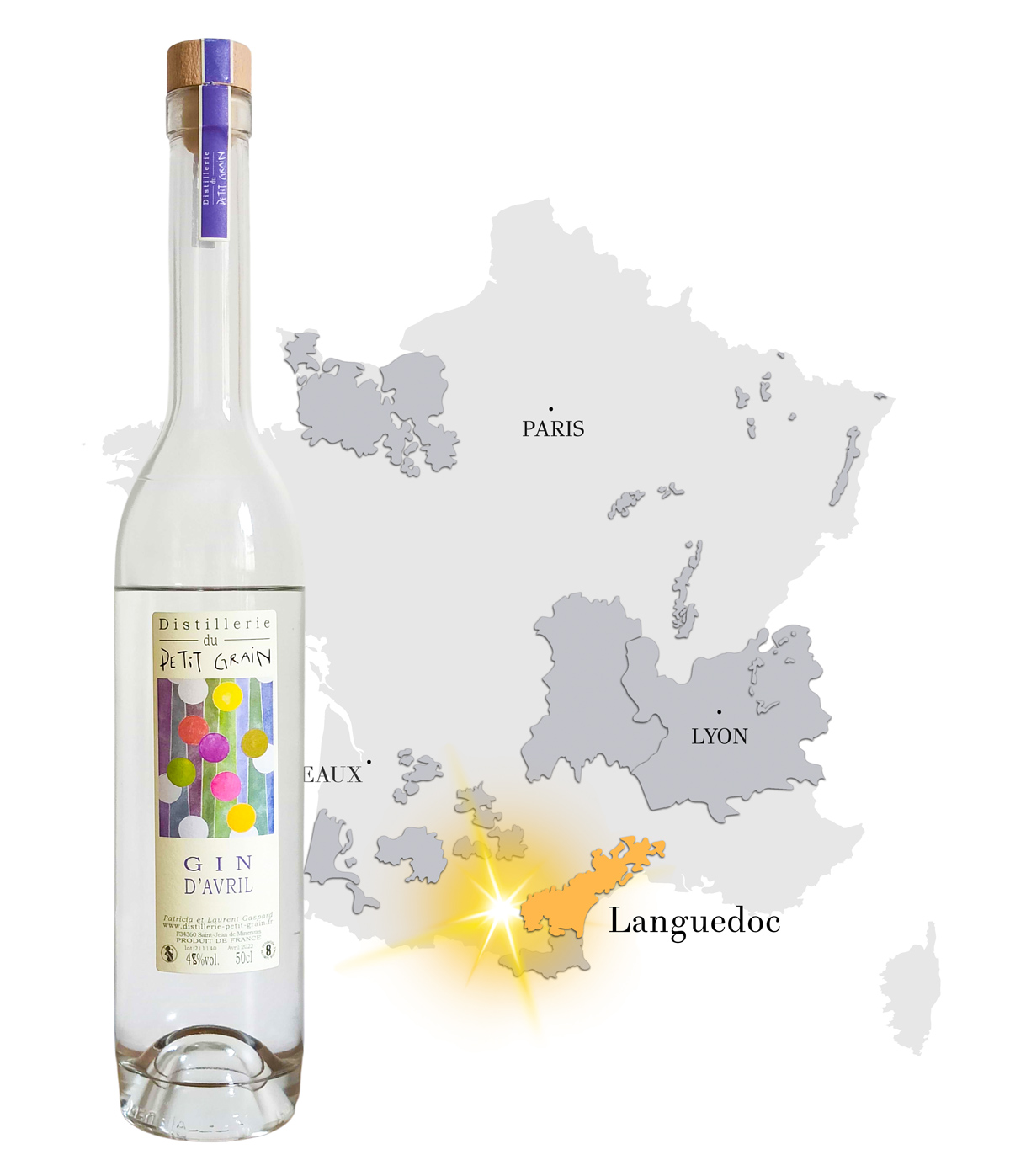
Limited stock
SPECIAL OFFER
Purchase 2 bottles, get an 8% discount per bottle.
Purchase 3 bottles (or more), get a 15% discount per bottle.
Note: Discounts automatically applied at checkout.
ABV: 48 %
Bottle Size: 50 cl




Distillerie du Petit Grain Gin d’Avril
In the early 2000s, Laurent and Patricia Gaspard established the Distillerie du Petit Grain, situated in the small town of Saint-Jean de Minervois in the Haut Languedoc. From their beginnings to today, they remain firmly rooted in the Saint-Jean de Minervois terroir and in their quest for distillates with the utmost purity and without a shred of artifice, and which are not dominated by alcohol. It’s no surprise that during a large blind tasting organized by the French Très Très Bon in 2021, containing a staggering 200 French gins, Distillerie du Petit Grain came out number one!
Languedoc
The Gin d’Avril is made from fresh herbs cut at the time of spring’s arrival around Saint-Jean de Minervois, in the Haut-Languedoc Regional Park in the foothills of the Massif Central. The idea with this gin was to combine the classic notes of juniper with flowers, aromatic herbs, and sap which mark the arrival of the spring in the Languedoc. The original recipe also marries thyme, fennel and pistachio shoots with wild lavender and pine cones. Additionally, the recipe makes use of galangal, an ingredient found on a list from 1495 specifying the different botanicals destined for the creation of gin. Distillerie du Petit Grain is especially pleased to re-introduce this once typical gin ingredient. Serve neat, slightly chilled, or, in the most beautiful gin and tonic you’ll ever have - 2 to 5 ratio is our preference and definitely do not skimp on the tonic water, lime or lemon wedge.
What?
Distillerie du Petit Grain Gin d’Avril
Who?
In the early 2000s, Laurent and Patricia Gaspard established the Distillerie du Petit Grain, situated in the small town of Saint-Jean de Minervois in the Haut Languedoc. From their beginnings to today, they remain firmly rooted in the Saint-Jean de Minervois terroir and in their quest for distillates with the utmost purity and without a shred of artifice, and which are not dominated by alcohol. It’s no surprise that during a large blind tasting organized by the French Très Très Bon in 2021, containing a staggering 200 French gins, Distillerie du Petit Grain came out number one!
Where?
Languedoc
How?
The Gin d’Avril is made from fresh herbs cut at the time of spring’s arrival around Saint-Jean de Minervois, in the Haut-Languedoc Regional Park in the foothills of the Massif Central. The idea with this gin was to combine the classic notes of juniper with flowers, aromatic herbs, and sap which mark the arrival of the spring in the Languedoc. The original recipe also marries thyme, fennel and pistachio shoots with wild lavender and pine cones. Additionally, the recipe makes use of galangal, an ingredient found on a list from 1495 specifying the different botanicals destined for the creation of gin. Distillerie du Petit Grain is especially pleased to re-introduce this once typical gin ingredient. Serve neat, slightly chilled, or, in the most beautiful gin and tonic you’ll ever have - 2 to 5 ratio is our preference and definitely do not skimp on the tonic water, lime or lemon wedge.
Reason for choosing
The Gin d’Avril is a hauntingly pure gin! Your nose and taste buds deserve this!
Very pretty. Floral. Fresh. Clean. Undeniably herbal - like smelling the actual oils from the mixed fresh herbs. Sappy.
Mouth coating but still so elegant. Fresh and lively. Zero aggressivity from the alcohol. Strong herbal signature - again think oils and sap, not dried herbs. The freshness and cleanliness dominates any perception of sweetness. Tastes like something of very high quality.
Nose: Very pretty. Floral. Fresh. Clean. Undeniably herbal - like smelling the actual oils from the mixed fresh herbs. Sappy.
Palate: Mouth coating but still so elegant. Fresh and lively. Zero aggressivity from the alcohol. Strong herbal signature - again think oils and sap, not dried herbs. The freshness and cleanliness dominates any perception of sweetness. Tastes like something of very high quality.
Fun Fact
The sommelier at the l'Elysee French presidential palace selected Distillerie du Petit Grain gins for the presidential cellar. Yes, they are that good!
Reviews (3)
Interesting
As Spock said "It's Gin, Jim, but not as we know it." I felt like my mouth was being beaten with Poseys wielded by septuagenarian ladies. An overwhelming memory of those violet candy hearts we had as Children. It wasn't for me but at that price, it is a worthwhile experiment. I had people begging...
Incredibly complex and balanced Gin
A French Gin produced in Languedoc from fresh herbs cut at the time of spring’s arrival around Saint-Jean de Minervois, in the Haut-Languedoc Regional Park in the foothills of the Massif Central. An incredibly clean nose with fresh herbs and floral notes on the nose initially, with some underlying...
Armagnac Aurian A25

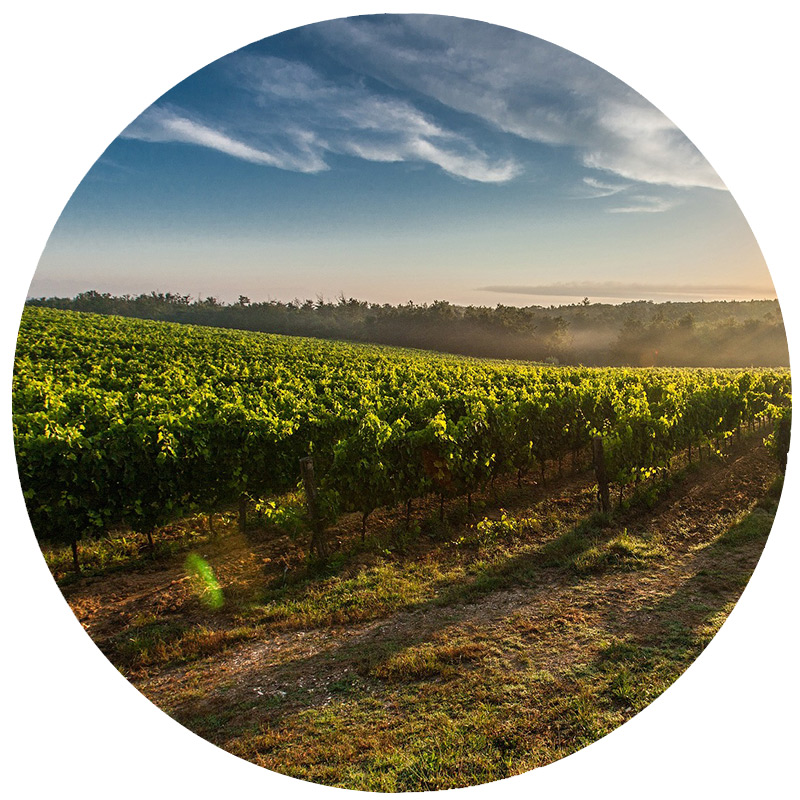

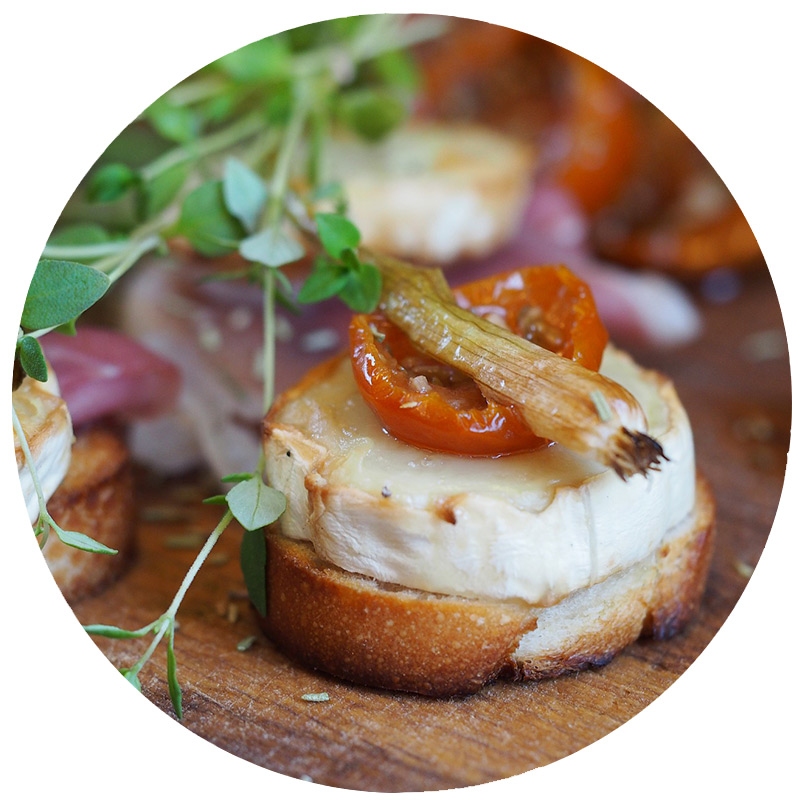
Maison Aurian A25 “Le A de Aurian”
Maison Aurian was founded in 1880. Joseph Dupeyron obtained some first lots of Armagnac and began to age and blend them. Marius Aurian later joined, thus giving the first link to the Aurian family name. Philippe Aurian would go on to develop the wide offering of drinks still seen today: aperitifs, liqueurs, Armagnacs, etc. Fast forward to 2018 and it’s Florent and Isabella who took over the family business. They have a love for the Armagnac region and especially the products they put in bottle. They have a strong desire to continue to be innovative and bold, and they are keenly interested in sustainable development. It is worth noting that Maison Aurian does not possess vines themselves. Instead, they source from local growers that they have worked with year after year and provide the level of quality required for the Maison Aurian name - which is undoubtedly very high.
Armagnac
The Aurian A25 (Le A de Aurian) is a blend of Armagnacs all of which are at least 25 years old. It is bottled at 45.9% and as all Armagnacs from Maison Aurian, it does not contain any sugar, coloring, or other additives whatsoever. The packaging is quite unique too and perfectly demonstrates Aurian’s eye towards sustainable development and short-circuit production. The square decanter is produced in France, the wood box the bottle comes in is made up of local wood, and the cork stopper is actually made of local stone. It has tremendous heft, exudes a real sense of quality and has presence on one’s table.
What?
Maison Aurian A25 “Le A de Aurian”
Who?
Maison Aurian was founded in 1880. Joseph Dupeyron obtained some first lots of Armagnac and began to age and blend them. Marius Aurian later joined, thus giving the first link to the Aurian family name. Philippe Aurian would go on to develop the wide offering of drinks still seen today: aperitifs, liqueurs, Armagnacs, etc. Fast forward to 2018 and it’s Florent and Isabella who took over the family business. They have a love for the Armagnac region and especially the products they put in bottle. They have a strong desire to continue to be innovative and bold, and they are keenly interested in sustainable development. It is worth noting that Maison Aurian does not possess vines themselves. Instead, they source from local growers that they have worked with year after year and provide the level of quality required for the Maison Aurian name - which is undoubtedly very high.
Where?
Armagnac
How?
The Aurian A25 (Le A de Aurian) is a blend of Armagnacs all of which are at least 25 years old. It is bottled at 45.9% and as all Armagnacs from Maison Aurian, it does not contain any sugar, coloring, or other additives whatsoever. The packaging is quite unique too and perfectly demonstrates Aurian’s eye towards sustainable development and short-circuit production. The square decanter is produced in France, the wood box the bottle comes in is made up of local wood, and the cork stopper is actually made of local stone. It has tremendous heft, exudes a real sense of quality and has presence on one’s table.
Reason for choosing
Simply put, this is textbook mature Armagnac with a wonderful balance between fruit, oak, and spices.
Fruity, nice wood note - pine and other fragrant woods, great tug of war between fruits and oak. Figs, dates, canned peaches, and fragrant miel de fleurs
Very fresh, tannins from the oak contract the cheeks, the same tug of war between the fruits and woods is present. Not an oaky Armagnac, but also not a fruity one either - complex and balanced between oak and fruit. Dry and very rich in flavor. Textbook!
Nose: Fruity, nice wood note - pine and other fragrant woods, great tug of war between fruits and oak. Figs, dates, canned peaches, and fragrant miel de fleurs
Palate: Very fresh, tannins from the oak contract the cheeks, the same tug of war between the fruits and woods is present. Not an oaky Armagnac, but also not a fruity one either - complex and balanced between oak and fruit. Dry and very rich in flavor. Textbook!
Fun Fact
Armagnac is France’s oldest eau-de-vie, with records of distilling and the creation of Armagnac going back 700+ years.
Pastis Pink Pastaga




Straw Bale Distillery Pink Pastaga (Pastis)
Straw Bale Distillery is also the project of Gilles Victors, a knifemaker for more than 15 years and avid lover of spirits. Fascinated by his favorite spirit, whisky, he decided to learn a little more about it and joined master classes. After doing so, he was convinced. He then trained in the Cognac region and took technical courses in French and Scottish distilleries. Today he is the man behind the fantastic gins and pastis coming out of Straw Bale Distillery, situated just outside of Toulouse. It is worth noting that the distillery itself is made entirely out of bales of straw, hence the name Straw Bale distillery. Gilles is especially keen on purity in his spirits made without a thread of artifice, sustainability, and keeping his production sourcing as local as possible.
Sud-Ouest (Southwest)
The Pink Pastaga is entirely made by slow infusion and aged for a long time in vats. Gilles wanted to shake up the codes of pastis by integrating Timut pepper. This delicate berry, worked by slow maceration, brings incomparable citrus notes to the recipe. Subtly combined with star anise, and other botanicals, to obtain a very aromatic, gourmande and exceptionally fresh pastis. No, Provence does not have a monopoly on pastis production!
What?
Straw Bale Distillery Pink Pastaga (Pastis)
Who?
Straw Bale Distillery is also the project of Gilles Victors, a knifemaker for more than 15 years and avid lover of spirits. Fascinated by his favorite spirit, whisky, he decided to learn a little more about it and joined master classes. After doing so, he was convinced. He then trained in the Cognac region and took technical courses in French and Scottish distilleries. Today he is the man behind the fantastic gins and pastis coming out of Straw Bale Distillery, situated just outside of Toulouse. It is worth noting that the distillery itself is made entirely out of bales of straw, hence the name Straw Bale distillery. Gilles is especially keen on purity in his spirits made without a thread of artifice, sustainability, and keeping his production sourcing as local as possible.
Where?
Sud-Ouest (Southwest)
How?
The Pink Pastaga is entirely made by slow infusion and aged for a long time in vats. Gilles wanted to shake up the codes of pastis by integrating Timut pepper. This delicate berry, worked by slow maceration, brings incomparable citrus notes to the recipe. Subtly combined with star anise, and other botanicals, to obtain a very aromatic, gourmande and exceptionally fresh pastis. No, Provence does not have a monopoly on pastis production!
Reason for choosing
Because we adore the flavors and easy-going vibes of Pastis but wanted a more natural artisanal pure style of pastis (move over Ricard!).
The freshness is surprising. The anise is well present, underlined by licorice and cinnamon. Then comes the citrus notes, between grapefruit and lemon, followed by a hint of balsamic and camphor.
The attack is round and gourmande. The freshness from the nose is confirmed. This pastis fills the palate with fruity aromas and a touch of liquorice pepper. Long, supple, pleasant and thirst-quenching finish.
Nose: The freshness is surprising. The anise is well present, underlined by licorice and cinnamon. Then comes the citrus notes, between grapefruit and lemon, followed by a hint of balsamic and camphor.
Palate: The attack is round and gourmande. The freshness from the nose is confirmed. This pastis fills the palate with fruity aromas and a touch of liquorice pepper. Long, supple, pleasant and thirst-quenching finish.
Fun Fact
A not-too-distant cousin of Absinthe, Pastis is sometimes referred to as Pastaga, hence the name of this before-dinner aperitif killer!
Chartreuse 108 Plantes




Vert de Coeur Distillerie 108 Plantes
Marius Dissat started the distillery in 2016 in South America, more precisely in Ushuaia. He was then also a mountain guide and regularly organized meals, aperitifs, main courses, desserts at the foot of the glacier, which always featured a small tasting of his homemade maté liqueur. In 2017 he returned to the Haute Savoie with his partner in order to professionalize his knack for distillation and the creation of all sorts of liqueurs and spirits. The Vert de Coeur Distillerie was thus established. After three years in a 5 square meter space, they were able to move to a farm of 20 hectares in the commune of Saint-Jean Saint-Maurice-sur-Loire to have the space to organize cultural events and grow many of the plants they use in their distillates and liqueurs. It has been one and half years in this new space and things are moving full speed ahead. They are “Artisanal by conviction, authentic by nature.”
Auvergne-Rhône-Alpes
As the name indicates,108 plants were used in the creation of this beautifully natural liqueur - an artisanal modern take on chartreuse. Without naming all of the plants, the 108 Plants includes: small absinthe, large absinthe, arquebus, 5-6 types of mint, 4-5 types of pepper, 4 types of ginger, eucalyptus, lavender, basil, thyme, wild thyme, gentian, angelica, coriander, among many many others. We suspect the blue lagoon color comes from butterfly pea flowers. To be able to take the name 108 Plants, it is imperative that no single plant dominates the recipe. This recipe is a creation of Vert de Coeur, and the bulk of the recipe remains a closely guarded secret. Batch size: 108 bottles, Number of plants: 108, Aging potential: 108 years. But we encourage you to not wait that long!
What?
Vert de Coeur Distillerie 108 Plantes
Who?
Marius Dissat started the distillery in 2016 in South America, more precisely in Ushuaia. He was then also a mountain guide and regularly organized meals, aperitifs, main courses, desserts at the foot of the glacier, which always featured a small tasting of his homemade maté liqueur. In 2017 he returned to the Haute Savoie with his partner in order to professionalize his knack for distillation and the creation of all sorts of liqueurs and spirits. The Vert de Coeur Distillerie was thus established. After three years in a 5 square meter space, they were able to move to a farm of 20 hectares in the commune of Saint-Jean Saint-Maurice-sur-Loire to have the space to organize cultural events and grow many of the plants they use in their distillates and liqueurs. It has been one and half years in this new space and things are moving full speed ahead. They are “Artisanal by conviction, authentic by nature.”
Where?
Auvergne-Rhône-Alpes
How?
As the name indicates,108 plants were used in the creation of this beautifully natural liqueur - an artisanal modern take on chartreuse. Without naming all of the plants, the 108 Plants includes: small absinthe, large absinthe, arquebus, 5-6 types of mint, 4-5 types of pepper, 4 types of ginger, eucalyptus, lavender, basil, thyme, wild thyme, gentian, angelica, coriander, among many many others. We suspect the blue lagoon color comes from butterfly pea flowers. To be able to take the name 108 Plants, it is imperative that no single plant dominates the recipe. This recipe is a creation of Vert de Coeur, and the bulk of the recipe remains a closely guarded secret. Batch size: 108 bottles, Number of plants: 108, Aging potential: 108 years. But we encourage you to not wait that long!
Reason for choosing
You are in need of a surprise, something to stun and transport you to another place. It is impossible not to smile after sipping the 108 Plantes!
Intense, magical, mystical - unlike anything smelled before. It’s as if one can smell all 108 of the plants, each one present and accounted for but not competing for attention. Roots, spices, herbs, infusions, mints, anise, gingers, peppers, flowers, citrus, etc. It’s all there. Each smell reveals something new.
Fresh, clean, and balanced. The smile arrives before the liquid can even be swallowed. It’s strong but the accompanying sweetness is there in support - works so well. Aromas from the nose appear as flavors: roots, spices, herbs, infusions, mints, anise, gingers, flowers, citrus, etc. Beautifully drinkable. A unique experience.
To get the maximum aromas and sensational impact, drink it neat but slightly chilled. Prepare to smile!
Nose: Intense, magical, mystical - unlike anything smelled before. It’s as if one can smell all 108 of the plants, each one present and accounted for but not competing for attention. Roots, spices, herbs, infusions, mints, anise, gingers, peppers, flowers, citrus, etc. It’s all there. Each smell reveals something new.
Palate: Fresh, clean, and balanced. The smile arrives before the liquid can even be swallowed. It’s strong but the accompanying sweetness is there in support - works so well. Aromas from the nose appear as flavors: roots, spices, herbs, infusions, mints, anise, gingers, flowers, citrus, etc. Beautifully drinkable. A unique experience.
Service: To get the maximum aromas and sensational impact, drink it neat but slightly chilled. Prepare to smile!
Fun Fact
Recent Unesco World Heritage site, the Chaine des Puys - Limagne fault, contains an alignment of 80 volcanoes. This central region of France is a geological tectonic hotspot.
Marc de Bourgogne 2011




Domaine La Croix Montjoie Marc de Bourgogne (2011)
Sophie is the granddaughter of a winemaker and agronomist. Matthieu is an oenologist. In 2009, after a few years of experience in other French vineyards, and accompanied by a group of wine lovers, they decided to create the Domaine La Croix Montjoie. Today, happy owners of the domaine, they give all their energy to La Croix Montjoie and its production. The Domaine itself is the former farm of the village castle where people cultivated, raised animals and even produced wine a long time ago. It is named after the Montjoie Cross at the entrance to the village from which pilgrims discovered Vézelay for the first time. Today the place is magical, the terrace faces Vézelay and lets one discover the foothills of the Morvan. It is a place which does not leave one indifferent!
Bourgogne
Elaborated from the distillation of the domaine’s marcs. Recall that a marc is all that is left over after grapes are pressed. So this will include grape skins, seeds, stems, and of course leftover grape juice. La Croix Montjoie does not distill itself. At the time of distillation, they call upon one of the few remaining traveling distillers in the region. The distillate is then aged in the cellars in old ex-Chardonnay (AOC Vezelay) oak barrels for 10 years. Only 200 liters or so of marc is made per year, and most of it never leaves the domaine. The marc is brut de fut, so natural color, unchill-filtered, and no reduction whatsoever. “It is a real vigneron’s marc. It is rustic due to the brut de fut but at the same time refined thanks to its long maturation period which has allowed it to settle down.” Sophie from La Croix Montjoie.
What?
Domaine La Croix Montjoie Marc de Bourgogne (2011)
Who?
Sophie is the granddaughter of a winemaker and agronomist. Matthieu is an oenologist. In 2009, after a few years of experience in other French vineyards, and accompanied by a group of wine lovers, they decided to create the Domaine La Croix Montjoie. Today, happy owners of the domaine, they give all their energy to La Croix Montjoie and its production. The Domaine itself is the former farm of the village castle where people cultivated, raised animals and even produced wine a long time ago. It is named after the Montjoie Cross at the entrance to the village from which pilgrims discovered Vézelay for the first time. Today the place is magical, the terrace faces Vézelay and lets one discover the foothills of the Morvan. It is a place which does not leave one indifferent!
Where?
Bourgogne
How?
Elaborated from the distillation of the domaine’s marcs. Recall that a marc is all that is left over after grapes are pressed. So this will include grape skins, seeds, stems, and of course leftover grape juice. La Croix Montjoie does not distill itself. At the time of distillation, they call upon one of the few remaining traveling distillers in the region. The distillate is then aged in the cellars in old ex-Chardonnay (AOC Vezelay) oak barrels for 10 years. Only 200 liters or so of marc is made per year, and most of it never leaves the domaine. The marc is brut de fut, so natural color, unchill-filtered, and no reduction whatsoever. “It is a real vigneron’s marc. It is rustic due to the brut de fut but at the same time refined thanks to its long maturation period which has allowed it to settle down.” Sophie from La Croix Montjoie.
Reason for choosing
Sure, there are traces of Cognac, Armagnac, and whisky in this fabulously characterful spirit, but this Marc de Bourgogne really has its own identity. Buckle your seatbelts for this one!
Expressive. Sharp and spirit-y at first. Traces of wood and spices. Twiggy and stemmy but oh so full of character! There’s fruit - yellow plums, golden raisins, figs, etc. - but it’s fighting for attention. Charming rusticity at its finest!
Intense and bracing but with a fine mouthfeel - a fascinating contrast. Warming on the finish. More fruit appears on the palate than the nose would give away. Roasted coffee note. Spices and pepper.
Any occasion which calls for a Cognac, Armagnac, or whisky.
A few drops of room temperature water really allow this marc to open up.
Nose: Expressive. Sharp and spirit-y at first. Traces of wood and spices. Twiggy and stemmy but oh so full of character! There’s fruit - yellow plums, golden raisins, figs, etc. - but it’s fighting for attention. Charming rusticity at its finest!
Palate: Intense and bracing but with a fine mouthfeel - a fascinating contrast. Warming on the finish. More fruit appears on the palate than the nose would give away. Roasted coffee note. Spices and pepper.
Service: Any occasion which calls for a Cognac, Armagnac, or whisky.
Tip: A few drops of room temperature water really allow this marc to open up.
Fun Fact
Merely 3% of France’s wine production comes from Bourgogne, but an impressive 23% of French appellations (AOC’s) are in Bourgogne - terroir is the essence! And La Croix Montjoie makes some fantastic white wines. You’re welcome!
Reviews (1)
Great Pomace Brandy
On the nose, fine notes of tobacco, oak, spices, and a dose of ginger (with few drops of water). The mouth is consistent with the nose and fruitiness. It has a pleasant robustness because it was distilled from pomace. It makes the mouth wet and longing for another sip. This is very similar...
Windholtz Eau de Vie de Fraise (Fermentation)
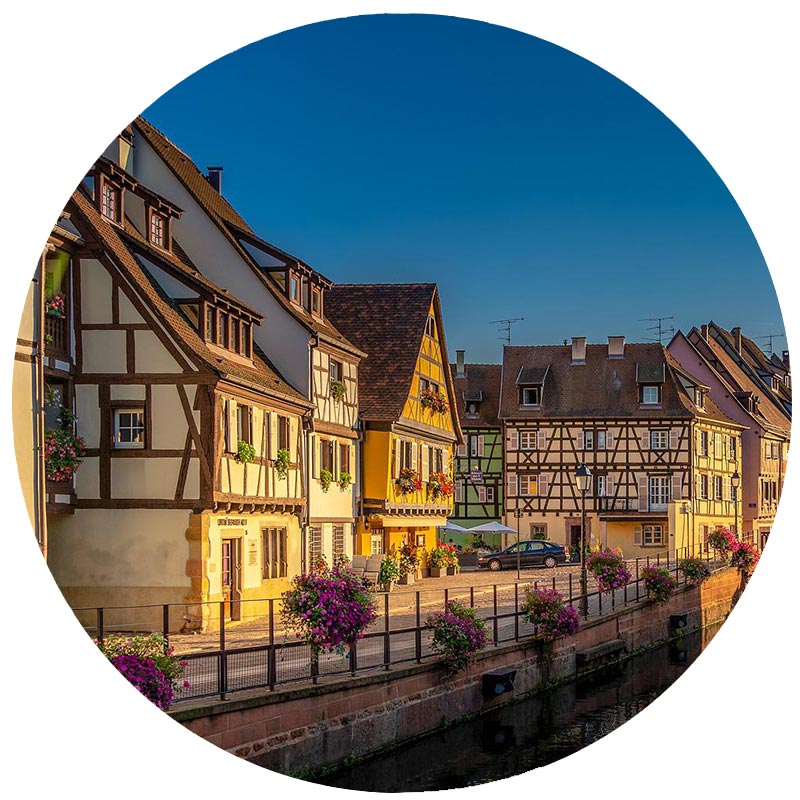



Distillerie Artisanale Marcel Windholtz Eau-de-Vie de Pur Fruit Fraise from Fermentation
“First of all, one does not improvise as a distiller: in the Windholtz family, three generations have accumulated a wealth of experience in the subtle art of ‘separating fixed and volatile elements by heat’.” -Marcel Windholtz
Born in a region with a strong personality and where life is undeniably good, the Distillerie Windholtz eaux-de-vie express authenticity and harmony. Their spirits can be thought of as the ambassadors of Alsace. Who has not experienced this selfish and voluptuous ritual at the end of a meal? That moment when you hold your glass of eau-de-vie to try to explore all that it has to offer. You smell it to get to understand it before tasting it with tenderness. The Windholtz family is proud, through its range of eaux de vie and liqueurs, to be the accomplice of your good moments.
Alsace
By definition, an eau-de-vie is the result of the distillation of a fermentation of fruits, fruit juices, marcs, wines, etc. But for some fruits, 17 to be exact, it is authorized to do a maceration and not a fermentation. That is, a neutral alcohol is added to the fruits and distillation occurs thereafter. Legislation stipulates that if the amount of alcohol added is less than 20 liters of pure alcohol per 100 kilos of fruit, then the result of the distillation may be sold as an eau-de-vie. Remarkably, this Windholtz Eau-de-Vie de Pur Fruit Fraise was obtained by fermentation, an incredible feat and a rarity due to strawberry not having enough natural sugar content to be suitable for a fermentation. To this end, a staggering 100 kilograms (220 pounds) of strawberries are needed to make 2.1 liters of this Eau-de-Vie de Pur Fruit Fraise. Wow! There is no added sugar, no coloring, and no other additives whatsoever. And it goes without saying, that everything begins at the Distillerie Windholtz with a rigorous selection of the best quality strawberries.
What?
Distillerie Artisanale Marcel Windholtz Eau-de-Vie de Pur Fruit Fraise from Fermentation
Who?
“First of all, one does not improvise as a distiller: in the Windholtz family, three generations have accumulated a wealth of experience in the subtle art of ‘separating fixed and volatile elements by heat’.” -Marcel Windholtz
Born in a region with a strong personality and where life is undeniably good, the Distillerie Windholtz eaux-de-vie express authenticity and harmony. Their spirits can be thought of as the ambassadors of Alsace. Who has not experienced this selfish and voluptuous ritual at the end of a meal? That moment when you hold your glass of eau-de-vie to try to explore all that it has to offer. You smell it to get to understand it before tasting it with tenderness. The Windholtz family is proud, through its range of eaux de vie and liqueurs, to be the accomplice of your good moments.
Where?
Alsace
How?
By definition, an eau-de-vie is the result of the distillation of a fermentation of fruits, fruit juices, marcs, wines, etc. But for some fruits, 17 to be exact, it is authorized to do a maceration and not a fermentation. That is, a neutral alcohol is added to the fruits and distillation occurs thereafter. Legislation stipulates that if the amount of alcohol added is less than 20 liters of pure alcohol per 100 kilos of fruit, then the result of the distillation may be sold as an eau-de-vie. Remarkably, this Windholtz Eau-de-Vie de Pur Fruit Fraise was obtained by fermentation, an incredible feat and a rarity due to strawberry not having enough natural sugar content to be suitable for a fermentation. To this end, a staggering 100 kilograms (220 pounds) of strawberries are needed to make 2.1 liters of this Eau-de-Vie de Pur Fruit Fraise. Wow! There is no added sugar, no coloring, and no other additives whatsoever. And it goes without saying, that everything begins at the Distillerie Windholtz with a rigorous selection of the best quality strawberries.
Reason for choosing
This is as natural an expression of distilled strawberries as you can find on planet Earth! It is from Fermentation and very rare.
Very pretty. Intense. Not as obviously strawberry as the Distillerie Windholtz Eau-de-Vie de Fraise from maceration. With air the strawberry becomes more apparent, but it has a wild side. Smells like crushed wild strawberries. Utterly beautiful nose!
Extremely fine, of a very high quality. A textural sipping experience, which slowly fades away. The Strawberry is more apparent on the palate than on the nose. Ultra dense, concentrated strawberries picked from the wild.
Nose: Very pretty. Intense. Not as obviously strawberry as the Distillerie Windholtz Eau-de-Vie de Fraise from maceration. With air the strawberry becomes more apparent, but it has a wild side. Smells like crushed wild strawberries. Utterly beautiful nose!
Palate: Extremely fine, of a very high quality. A textural sipping experience, which slowly fades away. The Strawberry is more apparent on the palate than on the nose. Ultra dense, concentrated strawberries picked from the wild.
Fun Fact
It deserves to be repeated: 100 kilograms (220 pounds) of strawberries are needed to make 2.1 liters of this Eau-de-Vie de Pur Fruit Fraise.
Liqueur de Tomates
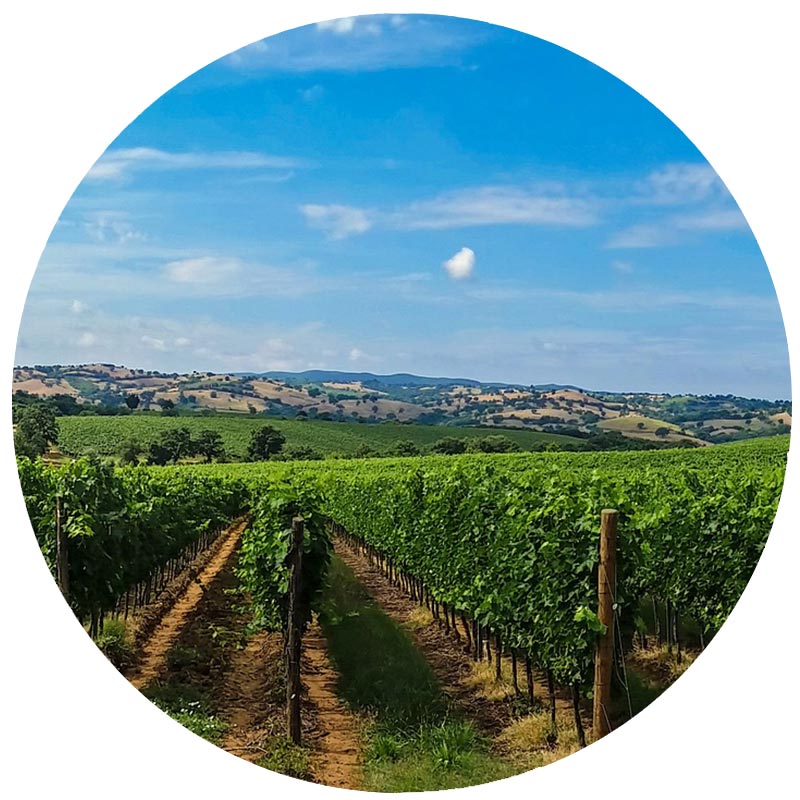



Distillerie Cazottes Liqueur de Tomates
Currently run by Laurent Cazottes, Domaine Cazottes captures the very essence of natural tastes. Everything they produce is harvested organically in strict adherence to the Nature & Progrès association principles and practices of biodynamics. The successes of the Distillery rest with decades of passed on ancestral know-how, which are combined with a modern approach in a biological environment – allowing Laurent’s brandies, aperitifs and liqueurs to express the quintessence of the aromas specific to the fruits or flowers from which they come.
Sud-Ouest (Southwest)
In order to produce this unexpected liqueur, the tomatoes at optimal ripeness on each day are picked and manually sorted. Picking, or harvesting, continues until all varieties have reached ripeness and can therefore be gathered. The harvested tomatoes are manually cut into quarters and then macerated in an organic house brandy, in which they are left for several months before being filtered and bottled at an alcoholic strength of 18%. Serve this Liqueur de Tomates slightly chilled as an aperitif alongside classic before-dinner snacks such as olives, tapenade, cheese, tomato and mozzarella skewers, etc. There are also endless pairing possibilities during a meal. Get creative!
What?
Distillerie Cazottes Liqueur de Tomates
Who?
Currently run by Laurent Cazottes, Domaine Cazottes captures the very essence of natural tastes. Everything they produce is harvested organically in strict adherence to the Nature & Progrès association principles and practices of biodynamics. The successes of the Distillery rest with decades of passed on ancestral know-how, which are combined with a modern approach in a biological environment – allowing Laurent’s brandies, aperitifs and liqueurs to express the quintessence of the aromas specific to the fruits or flowers from which they come.
Where?
Sud-Ouest (Southwest)
How?
In order to produce this unexpected liqueur, the tomatoes at optimal ripeness on each day are picked and manually sorted. Picking, or harvesting, continues until all varieties have reached ripeness and can therefore be gathered. The harvested tomatoes are manually cut into quarters and then macerated in an organic house brandy, in which they are left for several months before being filtered and bottled at an alcoholic strength of 18%. Serve this Liqueur de Tomates slightly chilled as an aperitif alongside classic before-dinner snacks such as olives, tapenade, cheese, tomato and mozzarella skewers, etc. There are also endless pairing possibilities during a meal. Get creative!
Reason for choosing
Quite frankly, because we were shocked to see that a tomato liqueur even existed - and because its singular tastes will leave no one indifferent!
Not immediately obvious as a tomato liqueur - traces of tomato, like the liquid recovered when draining tomatoes of their water. Ripe, almost sweet.
Sweet initial attack - a good reminder that tomatoes are fruits after all. Slightly acidic and quite savory. Slightly bitter finish. A very pure natural tomato flavor, but nothing exaggerated or tomato sauce-like. Fascinating but definitely one to pair with all sorts of different dishes.
Nose: Not immediately obvious as a tomato liqueur - traces of tomato, like the liquid recovered when draining tomatoes of their water. Ripe, almost sweet.
Palate: Sweet initial attack - a good reminder that tomatoes are fruits after all. Slightly acidic and quite savory. Slightly bitter finish. A very pure natural tomato flavor, but nothing exaggerated or tomato sauce-like. Fascinating but definitely one to pair with all sorts of different dishes.
Fun Fact
This Liqueur de Tomates is made from 160 different types of heirloom tomato varieties, including Golden Jubilee, Noire de Crimée, Rose de Berne, Merveilles des Marchés, Cornue des Andes and many others.
Larmes du Levant Saké




Les Larmes du Levant Saké Traditionnel Le Vent
Considering the intrinsic qualities of sake, the almost total absence of sake production sites in Europe, and the immense influence of French gastronomic culture, the idea of producing his own sake on the national territory became obvious. Gregoire traveled to Japan himself to learn firsthand from a “Tôji” (master brewer) the rudiments and techniques necessary to produce sake which respects the ancestral Japanese traditions and the culture of excellence of French terroir. The stay and the learning in Japan were decisive for the establishment of this French sake project. The fact that Grégoire had to follow the rhythm but also the difficult working conditions allowed him to understand the difficulties inherent to sake production and how to overcome them. It also allowed him to make many valuable local contacts with professionals in this sector, at all levels: manufacturers, suppliers, colleagues, distributors and others. Passing through the different layers of Japanese sake production has assured Grégoire a certain support from the sake world, touched by the approach taken and the respect for the traditional way. Today, this support is the strength of Les Larmes du Levant and contributes to its legitimacy.
Auvergne-Rhône-Alpes
Le Vent harmoniously combines the special sweetness of the Yamadanishiki sake rice variety and a hint of acidity, for a more evanescent and subtle body. A French sake...made from Japanese rice. All the sakes of the brewery are made with imported rice. In an unknown environment, the brewer - Japanese - wished to rely on his knowledge of the basic ingredient to brew his first batches. Second reason: there is no rice polisher sophisticated enough in Europe to achieve the polishing rates needed to produce this style of sake.
Category: Junmai (pure rice)
Alcohol: 15.4%
Rice variety: Yamadanishiki
Rice polishing: 50%
Countenance: 72cl
This sake Le Vent sits comfortably between sweet and dry sakes. The product does not contain sulfites and possesses a very good conservation period.
What?
Les Larmes du Levant Saké Traditionnel Le Vent
Who?
Considering the intrinsic qualities of sake, the almost total absence of sake production sites in Europe, and the immense influence of French gastronomic culture, the idea of producing his own sake on the national territory became obvious. Gregoire traveled to Japan himself to learn firsthand from a “Tôji” (master brewer) the rudiments and techniques necessary to produce sake which respects the ancestral Japanese traditions and the culture of excellence of French terroir. The stay and the learning in Japan were decisive for the establishment of this French sake project. The fact that Grégoire had to follow the rhythm but also the difficult working conditions allowed him to understand the difficulties inherent to sake production and how to overcome them. It also allowed him to make many valuable local contacts with professionals in this sector, at all levels: manufacturers, suppliers, colleagues, distributors and others. Passing through the different layers of Japanese sake production has assured Grégoire a certain support from the sake world, touched by the approach taken and the respect for the traditional way. Today, this support is the strength of Les Larmes du Levant and contributes to its legitimacy.
Where?
Auvergne-Rhône-Alpes
How?
Le Vent harmoniously combines the special sweetness of the Yamadanishiki sake rice variety and a hint of acidity, for a more evanescent and subtle body. A French sake...made from Japanese rice. All the sakes of the brewery are made with imported rice. In an unknown environment, the brewer - Japanese - wished to rely on his knowledge of the basic ingredient to brew his first batches. Second reason: there is no rice polisher sophisticated enough in Europe to achieve the polishing rates needed to produce this style of sake.
Category: Junmai (pure rice)
Alcohol: 15.4%
Rice variety: Yamadanishiki
Rice polishing: 50%
Countenance: 72cl
This sake Le Vent sits comfortably between sweet and dry sakes. The product does not contain sulfites and possesses a very good conservation period.
Reason for choosing
This is France’s take on sake - yes, French sake! If you love sake, and if you love France, then this is a must try!
Candied peach, dates and light almond
The attack is discreet, light and suave. The aromas of white fruit are revealed in the mouth. The final is fresh and persistent, embellished by fruity flavors of white peaches, cherry and elderberry
This elegant sake goes well with white fish, light blue cheeses, and fresh acidulous desserts. Le Vent is certainly the most subtle and delicate sake of the Les Larmes du Levant range.
Nose: Candied peach, dates and light almond
Palate: The attack is discreet, light and suave. The aromas of white fruit are revealed in the mouth. The final is fresh and persistent, embellished by fruity flavors of white peaches, cherry and elderberry
This elegant sake goes well with white fish, light blue cheeses, and fresh acidulous desserts. Le Vent is certainly the most subtle and delicate sake of the Les Larmes du Levant range.
Fun Fact
There are 24 thermal resorts within the region.
Lehmann Eau de vie de Poire Williams




Distillerie Lehmann Eau-de-Vie Reserve de Famille Poire Williams
Founded in 1850 by Joseph Lehmann, Distillerie Lehmann carries with it a savoir-faire that has been passed down from father to son for six generations. Distillerie Lehmann’s eaux-de-vie eloquently express the long tradition of quality and refinement of the French food and drink, of which they are the ambassadors throughout the world. The distillery remains steadfast in its commitment to protect and perpetuate this family tradition today and into the future. The distillery is today the oldest artisanal distillery in Alsace distinguished by the prestigious label EPV - Entreprise du Patrimoine Vivant. This state label is a guarantee of excellence of a rare and ancestral know-how, "Made in France".
Alsace
A rigorous selection of the best fruits, of optimal ripeness and perfect health, is mandatory for the elaboration of the eaux-de-vie. After passing through the hands of the Master Distiller, the fruits are distributed in barrels or vats. They quickly form a thick and sweet must; after 24 or 48 hours, fermentation is established under the action of the natural yeasts of the fruits. The quality of the finished product will largely depend on the fermentation, which can last upwards of six weeks. Thereafter, the double distillation through copper alambic Charentais.can begin. Post-distillation, the fruit brandies are put in dame jeannes in the attic. This is a very old practice which consists in placing the brandy in simple bottles closed by a cloth under the ceiling of the attic. There this Reserve de Famille Poire Willimas ages for 8 years. The important differences in temperature favor the evaporation of the esters, and the neutrality of the glass container allows the brandy’s aromas and color to remain pure and clear.
What?
Distillerie Lehmann Eau-de-Vie Reserve de Famille Poire Williams
Who?
Founded in 1850 by Joseph Lehmann, Distillerie Lehmann carries with it a savoir-faire that has been passed down from father to son for six generations. Distillerie Lehmann’s eaux-de-vie eloquently express the long tradition of quality and refinement of the French food and drink, of which they are the ambassadors throughout the world. The distillery remains steadfast in its commitment to protect and perpetuate this family tradition today and into the future. The distillery is today the oldest artisanal distillery in Alsace distinguished by the prestigious label EPV - Entreprise du Patrimoine Vivant. This state label is a guarantee of excellence of a rare and ancestral know-how, "Made in France".
Where?
Alsace
How?
A rigorous selection of the best fruits, of optimal ripeness and perfect health, is mandatory for the elaboration of the eaux-de-vie. After passing through the hands of the Master Distiller, the fruits are distributed in barrels or vats. They quickly form a thick and sweet must; after 24 or 48 hours, fermentation is established under the action of the natural yeasts of the fruits. The quality of the finished product will largely depend on the fermentation, which can last upwards of six weeks. Thereafter, the double distillation through copper alambic Charentais.can begin. Post-distillation, the fruit brandies are put in dame jeannes in the attic. This is a very old practice which consists in placing the brandy in simple bottles closed by a cloth under the ceiling of the attic. There this Reserve de Famille Poire Willimas ages for 8 years. The important differences in temperature favor the evaporation of the esters, and the neutrality of the glass container allows the brandy’s aromas and color to remain pure and clear.
Reason for choosing
It’s the most captivating pear spirit we have ever encountered, with flavors and textures like those of a beautiful homemade pear jam! And just look at that bottle and label! Stunning!
Undeniably, unapologetically pear. Pear jam or cooked stewed pears. Overripe extremely aromatic Williams Pear. It’s so true to the fruit.
Pear jam with traces of oozing ripe fresh pears. Respectful of the primary ingredient. Of a very high quality.
Nose: Undeniably, unapologetically pear. Pear jam or cooked stewed pears. Overripe extremely aromatic Williams Pear. It’s so true to the fruit.
Palate: Pear jam with traces of oozing ripe fresh pears. Respectful of the primary ingredient. Of a very high quality.
Serve neat. Enjoy.
Fun Fact
Strasbourg has France’s oldest and largest Christmas market and is even known as the Capital of Christmas.
Le Père Jules 40 Years Old Calvados




Le Pere Jules Calvados Pays d’Auge 40 Years
It all began in 1919, upon his return from World War I, that Jules Desfrièches (whom everyone called Pere Jules) decided to make a career out of his passion for apples and for his region Normandy. He first learned how to produce cider under the watchful eye of his grandparents. In 1923, he distilled his first Calvados without knowing that he and his production would become an institution in the world of Calvados. Fast forward to today where Guillaume Desfrièches is at helm and has been since 2002, after completing his studies in oenology. Since 1919, quality and rigor best summarize the four generations of producers, always faithful to ancestral traditions and always passionate about what they do. Their only unique desire has been and will continue to be to propose great products to their clients.
Normandy
Le Pere Jules has 40 hectares of orchards, containing 60 different varieties of apples. The terroir is clay and flint topsoil with a limestone subsoil. After picking, all of the apples go through manual sort to ensure the utmost quality. Fermentation then ensues and typically carries on for a period of three months, depending on the surrounding temperatures. The resulting cider destined to be distilled for Calvados is stored for one year before distillation. Distillation takes place two times in a wood burning charentais style alambic. Natural color, no additives. Forty years of aging have been necessary to bring suppleness, grace, and roundness to this prestigious Calvados. Its balance and flavors of cooked apples as well as its woody and spicy notes give it a remarkable aromatic complexity. Elegance in a bottle!
What?
Le Pere Jules Calvados Pays d’Auge 40 Years
Who?
It all began in 1919, upon his return from World War I, that Jules Desfrièches (whom everyone called Pere Jules) decided to make a career out of his passion for apples and for his region Normandy. He first learned how to produce cider under the watchful eye of his grandparents. In 1923, he distilled his first Calvados without knowing that he and his production would become an institution in the world of Calvados. Fast forward to today where Guillaume Desfrièches is at helm and has been since 2002, after completing his studies in oenology. Since 1919, quality and rigor best summarize the four generations of producers, always faithful to ancestral traditions and always passionate about what they do. Their only unique desire has been and will continue to be to propose great products to their clients.
Where?
Normandy
How?
Le Pere Jules has 40 hectares of orchards, containing 60 different varieties of apples. The terroir is clay and flint topsoil with a limestone subsoil. After picking, all of the apples go through manual sort to ensure the utmost quality. Fermentation then ensues and typically carries on for a period of three months, depending on the surrounding temperatures. The resulting cider destined to be distilled for Calvados is stored for one year before distillation. Distillation takes place two times in a wood burning charentais style alambic. Natural color, no additives. Forty years of aging have been necessary to bring suppleness, grace, and roundness to this prestigious Calvados. Its balance and flavors of cooked apples as well as its woody and spicy notes give it a remarkable aromatic complexity. Elegance in a bottle!
Reason for choosing
Because 40 year spirit does not automatically mean Cognac and Armagnac. This stuns on all levels: aroma, flavor, texture!
Baked apples, autumn spices - like the highest quality applesauce cooking in the kitchen pot. Trace of elegant oak. Complex.
Velvet texture. Balance that is off the charts. Rich warming applesauce. Spices.
Nose: Baked apples, autumn spices - like the highest quality applesauce cooking in the kitchen pot. Trace of elegant oak. Complex.
Palate: Velvet texture. Balance that is off the charts. Rich warming applesauce. Spices.
Fun Fact
Camembert is France’s best selling cheese!
Reviews (1)
A lovely Calvados
This is a Pays d’Auge Calvados, and fresh cooked, or stewed apples, along with some subtle baking spices greets the nose initially. Maybe a touch of oak on the nose as it opens, but this is all about the apples, and is not an apple pie Calvados. It is medium-full bodied in the mouth, and the palate...
St. Wendelin Whisky Le Principal




Distillerie Bertrand Saint Wendelin Le Principal Whisky d’Alsace
The first distillerie in Uberach was created in 1874 by Joseph Bertrand. Over time, the eaux-de-vie produced by Distillerie Bertrand conquered seemingly all of France’s best and most prestigious restaurants. Only in 1962 did the Joseph Bertrand commercial brand become a reality. Joseph Bertrand had three golden rules he strictly adhered to ensure utmost quality:
1.) Fermentation of the most exigently chosen fruits
2.) Tasting experience (of the master distiller) in order to extract the best from distillation
3.)The tradition of barrel aging to get the best out of the fruit
But this all pertains to Bertrand’s origins and continued experience as a distiller of eaux-de-vie des fruits. In 2003, the domaine naturally carried all of those closely held principles to whisky production. The first whisky from Uberach was distilled in 2003. Jean Metzger has been carefully raising Alsatian whiskies in the Bertrand cellars ever since.
Alsace
The malted barley used for Le Principal is organic barley, and the water source in Uberach is exceptionally soft and low in mineral content, which positively impacts the whisky. A copper Holstein alambic (column) is used for a double distillation. Interestingly, however, the first distillation makes use of all the plates, while the second distillation occurs with the plates detached.The whisky St. Wendelin Le Principal is named after the patron saint of the village of Uberach: Saint Wendelin. It spent five years aging in fresh 300L oak casks from Billon in Beaune, a reference among French tonnelleries. Each barrel used for the maturation of this whisky was selected personally by Jean Metzger. It is bottled at 46% unchill-filtered and, as the IGP requirements indicate, has no coloring or other additives. Bottling takes place once per year on St. Wendelin’s Day, either the 20, 21, or 22 of October.
What?
Distillerie Bertrand Saint Wendelin Le Principal Whisky d’Alsace
Who?
The first distillerie in Uberach was created in 1874 by Joseph Bertrand. Over time, the eaux-de-vie produced by Distillerie Bertrand conquered seemingly all of France’s best and most prestigious restaurants. Only in 1962 did the Joseph Bertrand commercial brand become a reality. Joseph Bertrand had three golden rules he strictly adhered to ensure utmost quality:
- Fermentation of the most exigently chosen fruits
- Tasting experience (of the master distiller) in order to extract the best from distillation
- The tradition of barrel aging to get the best out of the fruit
But this all pertains to Bertrand’s origins and continued experience as a distiller of eaux-de-vie des fruits. In 2003, the domaine naturally carried all of those closely held principles to whisky production. The first whisky from Uberach was distilled in 2003. Jean Metzger has been carefully raising Alsatian whiskies in the Bertrand cellars ever since.
Where?
Alsace
How?
The malted barley used for Le Principal is organic barley, and the water source in Uberach is exceptionally soft and low in mineral content, which positively impacts the whisky. A copper Holstein alambic (column) is used for a double distillation. Interestingly, however, the first distillation makes use of all the plates, while the second distillation occurs with the plates detached.The whisky St. Wendelin Le Principal is named after the patron saint of the village of Uberach: Saint Wendelin. It spent five years aging in fresh 300L oak casks from Billon in Beaune, a reference among French tonnelleries. Each barrel used for the maturation of this whisky was selected personally by Jean Metzger. It is bottled at 46% unchill-filtered and, as the IGP requirements indicate, has no coloring or other additives. Bottling takes place once per year on St. Wendelin’s Day, either the 20, 21, or 22 of October.
Reason for choosing
It’s hands down our favorite Alsatian whisky!
A beautiful light golden yellow color, visually a whisky with a nice depth and body
The nose is gourmand and clean revealing delicate woody notes
The cereal, oaky and malty side comes out with finesse to offer a sensation almost resembling Bourbon with its vanilla and exotic aromas and tastes
Eye: A beautiful light golden yellow color, visually a whisky with a nice depth and body
Nose: The nose is gourmand and clean revealing delicate woody notes
Palate: The cereal, oaky and malty side comes out with finesse to offer a sensation almost resembling Bourbon with its vanilla and exotic aromas and tastes
Fun Fact
A very prominent Cognac producer, known amongst the entire spirits community, has stated that Jean Metzger - the eleveur who raised the St. Wendelin Le Principal whisky - is the best taster he’s ever known. Put anything on the table in front of Mr. Metzger and he will likely pick it out.
Aravis Genepi Berger




Distillerie de Aravis Génépi Berger
In 1878, a wine merchant from Annecy founded the Distillerie des Aravis by elaborating the famous Aravis liqueur thanks to a monk who had a particular interest in medicinal plants. From 1954 to 2018, the production at the Distillerie de Aravais was under the watchful eye of the Thevenet family, until its eventual closure in 2018. Two years later, in 2020, Sarah and Romain Gauthier, two young brother and sister from Ardèche, and themselves children of distillers, wished to take up the challenge and perpetuate this traditional and family business. They bought the distillery and relocated to the Haute Savoie. One short year later, the still is fired up, the bottles are filled and the last coat of paint of the store is finished; the distillery reopened its doors to welcome visitors to the region and other loves or fine spirits with a distinctly Alps character.
Savoie
Formerly called "Génépi du Père Matthieu", the recipe of the now-titled Génépi Berger has not changed. It is still made from the maceration and distillation of the génépi plant from our mountains. An ancestral recipe which must be kept alive!
What?
Distillerie de Aravis Génépi Berger
Who?
In 1878, a wine merchant from Annecy founded the Distillerie des Aravis by elaborating the famous Aravis liqueur thanks to a monk who had a particular interest in medicinal plants. From 1954 to 2018, the production at the Distillerie de Aravais was under the watchful eye of the Thevenet family, until its eventual closure in 2018. Two years later, in 2020, Sarah and Romain Gauthier, two young brother and sister from Ardèche, and themselves children of distillers, wished to take up the challenge and perpetuate this traditional and family business. They bought the distillery and relocated to the Haute Savoie. One short year later, the still is fired up, the bottles are filled and the last coat of paint of the store is finished; the distillery reopened its doors to welcome visitors to the region and other loves or fine spirits with a distinctly Alps character.
Where?
Savoie
How?
Formerly called "Génépi du Père Matthieu", the recipe of the now-titled Génépi Berger has not changed. It is still made from the maceration and distillation of the génépi plant from our mountains. An ancestral recipe which must be kept alive!
Reason for choosing
It’s just too good to only drink when in the Alps! This is a veritable taste of the Alps!
The unique touch brought by the Distillerie des Aravis is the addition of Genepi plants in the bottle, whose contribution is both decorative and gustatory. These plants have the effect of a second maceration, allowing to tint the Génépi and to reinforce its exceptional taste.
The nose is frank and opens up with genepi, angelica root and a hint of mint.
Round, balanced mouth, without excessive sweetness or heaviness. Fresh finish on notes of flowers and pollen. Very aromatic, this liqueur owes its character to a recipe rich in plants. The sugar, taste enhancer, is used sparingly during its elaboration.
Serve as a digestive but also in cocktails, the génépi marries wonderfully with all the occasions. Serve chilled but not iced to preserve the nose and the aromas.
Eye: The unique touch brought by the Distillerie des Aravis is the addition of Genepi plants in the bottle, whose contribution is both decorative and gustatory. These plants have the effect of a second maceration, allowing to tint the Génépi and to reinforce its exceptional taste.
Nose: The nose is frank and opens up with genepi, angelica root and a hint of mint.
Palate: Round, balanced mouth, without excessive sweetness or heaviness. Fresh finish on notes of flowers and pollen. Very aromatic, this liqueur owes its character to a recipe rich in plants. The sugar, taste enhancer, is used sparingly during its elaboration.
Serve as a digestive but also in cocktails, the génépi marries wonderfully with all the occasions. Serve chilled but not iced to preserve the nose and the aromas.
Fun Fact
Dine at a typical Savoyard restaurant and without fail you will be poured a glass of Génépi upon the meal’s end. No meal would be complete without it!
Rene de Miscault Libertine Originale Absinthe




Rene de Miscault Libertine Originale Absinthe
Rene de Miscault was founded in 1859. From those early days until now, they have produced eau-de-vie de fruits, liqueurs, creams, gins, whiskies and an interesting range of absinthes, establishing themselves as absinthe specialists somewhat. Whatever the spirit they are trying to produce, they are steadfast in their aims to squeeze the absolute best quality in the bottle while keeping a deep and interesting range of products for customers.
Alsace
All of the Rene de Miscault absinthes are distilled, and all of the botanicals that go into the recipe are distilled separately. Rene de Miscault even goes a step further: they plant their own absinthe, fennel, and coriander giving them that extra layer of control. The recipe for their particular absinthe dates back to 1894. The color is natural and obtained by a slow infusion of plants. It is important to note how your absinthe should be served. While there are many different options, the French method goes as follows:
1.) Pour absinthe in a glass (a standard spirits pour: 25ml)
2.)Place an absinthe spoon, or a small fork, across the top of the glass and place a sugar cube on the spoon or fork.
3.)Prepare a pitcher of ice cold water. Slowly pour ice cold water on the sugar cube, therefore dissolving the sugar. Stop pouring once the sugar cube is completely dissolved.
The absinthe will change color and overall appearance; this is completely normal. Enjoy!
What?
Rene de Miscault Libertine Originale Absinthe
Who?
Rene de Miscault was founded in 1859. From those early days until now, they have produced eau-de-vie de fruits, liqueurs, creams, gins, whiskies and an interesting range of absinthes, establishing themselves as absinthe specialists somewhat. Whatever the spirit they are trying to produce, they are steadfast in their aims to squeeze the absolute best quality in the bottle while keeping a deep and interesting range of products for customers.
Where?
Alsace
How?
All of the Rene de Miscault absinthes are distilled, and all of the botanicals that go into the recipe are distilled separately. Rene de Miscault even goes a step further: they plant their own absinthe, fennel, and coriander giving them that extra layer of control. The recipe for their particular absinthe dates back to 1894. The color is natural and obtained by a slow infusion of plants. It is important to note how your absinthe should be served. While there are many different options, the French method goes as follows:
- Pour absinthe in a glass (a standard spirits pour: 25ml)
- Place an absinthe spoon, or a small fork, across the top of the glass and place a sugar cube on the spoon or fork.
- Prepare a pitcher of ice cold water. Slowly pour ice cold water on the sugar cube, therefore dissolving the sugar. Stop pouring once the sugar cube is completely dissolved.
The absinthe will change color and overall appearance; this is completely normal. Enjoy!
Reason for choosing
Maybe you’ve heard about it, or read about it, and now want to give it a try. If you’ve enjoyed pastis before, then know that absinthe is not too far off, but it’s bigger, bolder, typically more herbal, and more intense. We love it!
Very herbal attack. Black licorice notes, but greener more herbal notes dominate here like fennel and absinthe plants. Intense. Herbal. Complex too - tricky to wrap one’s head around. If pastis is a laid back summer sipper, this is a year-round thought provoking kind of spirit.
Intense. Forward on the herb notes - fennel and absinthe cover the black licorice. Bitter note comes in from the mid-palate but it works well since sugar was added and the drink was watered down. All stays balanced but it’s an intense and herbal version of balance. Very interesting. Singular.
Nose: Very herbal attack. Black licorice notes, but greener more herbal notes dominate here like fennel and absinthe plants. Intense. Herbal. Complex too - tricky to wrap one’s head around. If pastis is a laid back summer sipper, this is a year-round thought provoking kind of spirit.
Palate: Intense. Forward on the herb notes - fennel and absinthe cover the black licorice. Bitter note comes in from the mid-palate but it works well since sugar was added and the drink was watered down. All stays balanced but it’s an intense and herbal version of balance. Very interesting. Singular.
Fun Fact
Absinthe, commonly called the green fairy, was banned in most of Europe and around the world since it was thought, incorrectly so, to cause hallucinations.
Banyuls Vin de Meditation




Domaine La Tour Vieille Banyuls Vin de Méditation
The domaine was created in 1982 when Vincent Cantié took over the parcels of family vines scattered around Collioure. A few years later, Christine Campadieu joined Vincent, bringing along with her the vines from her family from the commune of Banyuls. Today they have 13 hectares, all planted on the region's abrupt, steep, terraced slopes. They make dry red and white wines, in addition to reductive and oxidative Banyuls wines. For simplicity, think of Banyuls as Port’s French cousin.
Roussillon
At Domaine La Tour Vieille, there are two categories of Banyuls: non-oxidative and oxidative. The oxidative wines, such as this Vin de Meditation (Wine of Mediation), is a blend of wines from multiple years, all of which aged for several years exposed to oxygen. This style of Banyuls has the most emblematic of all the Banyuls wines. The base of this Vin de Meditation dates back to the 1952 vintage and it is aged in a "perpetual barrel", a process that allows the old wine to "educate” the younger wine that is "entrusted" to it in small quantities for maturing. This is essentially the solera process. A few bottles were first produced in 1988 and since then, according to the subsequent bottlings, always miniscule in quantity, the level of the barrel is maintained half full thanks to the wine which is added little by little and from time to time. The result is a delicious blend of very old wines which can still go on for years without showing the slightest wrinkle.
What?
Domaine La Tour Vieille Banyuls Vin de Méditation
Who?
The domaine was created in 1982 when Vincent Cantié took over the parcels of family vines scattered around Collioure. A few years later, Christine Campadieu joined Vincent, bringing along with her the vines from her family from the commune of Banyuls. Today they have 13 hectares, all planted on the region's abrupt, steep, terraced slopes. They make dry red and white wines, in addition to reductive and oxidative Banyuls wines. For simplicity, think of Banyuls as Port’s French cousin.
Where?
Roussillon
How?
At Domaine La Tour Vieille, there are two categories of Banyuls: non-oxidative and oxidative. The oxidative wines, such as this Vin de Meditation (Wine of Mediation), is a blend of wines from multiple years, all of which aged for several years exposed to oxygen. This style of Banyuls has the most emblematic of all the Banyuls wines. The base of this Vin de Meditation dates back to the 1952 vintage and it is aged in a "perpetual barrel", a process that allows the old wine to "educate” the younger wine that is "entrusted" to it in small quantities for maturing. This is essentially the solera process. A few bottles were first produced in 1988 and since then, according to the subsequent bottlings, always miniscule in quantity, the level of the barrel is maintained half full thanks to the wine which is added little by little and from time to time. The result is a delicious blend of very old wines which can still go on for years without showing the slightest wrinkle.
Reason for choosing
Immense finesse and oozes maturity. Set aside your favorite Port, and give this immaculate Banyuls (French’s Prot cousin) a try.
The aromas suggest the finest rancio, in particular dry walnut, prune, a touch of black olive, and notes of mocha, roasted coffee, chocolate, and spices. To say this smells complex is an understatement here.
The mouth is powerful and deep thanks to its tannins, which are always of utmost finesse but exude an immense sense of maturity.
The Vin de Mediation is to be tasted after a nice meal in good company, or alone, but definitely with plenty of time in front of you. Out of respect for the quality of this Banyuls, drink as is: no ice, no mixing, etc.
Nose: The aromas suggest the finest rancio, in particular dry walnut, prune, a touch of black olive, and notes of mocha, roasted coffee, chocolate, and spices. To say this smells complex is an understatement here.
Palate: The mouth is powerful and deep thanks to its tannins, which are always of utmost finesse but exude an immense sense of maturity.
Service: The Vin de Mediation is to be tasted after a nice meal in good company, or alone, but definitely with plenty of time in front of you. Out of respect for the quality of this Banyuls, drink as is: no ice, no mixing, etc.
Fun Fact
The Roussillon has the highest mean temperature in all of France.
Meyer Eau de vie de Mirabelle
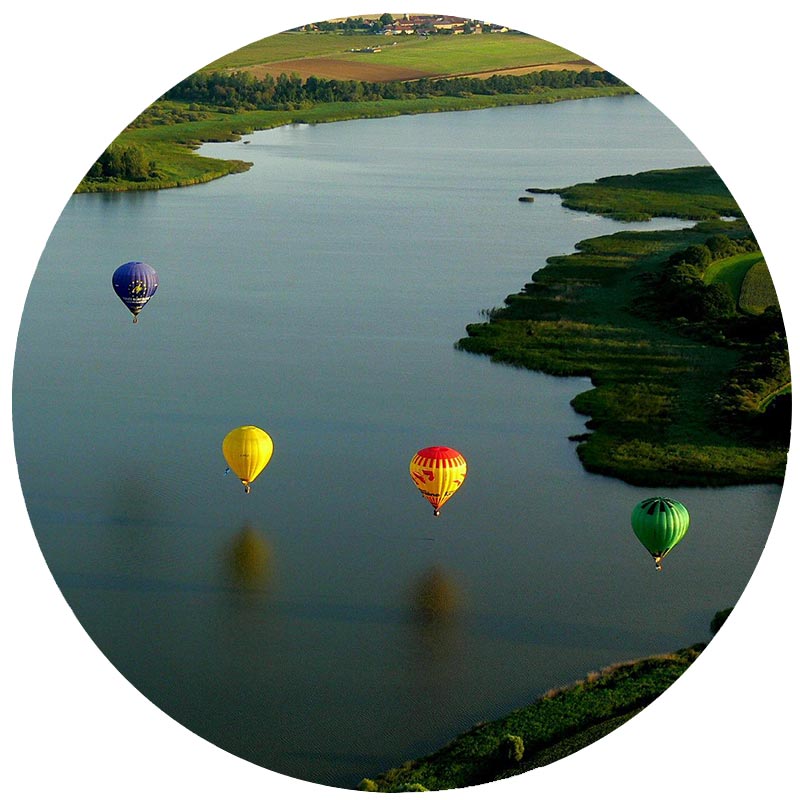



Distillerie Meyer Eau-de-Vie de Mirabelle Grande Reserve
The first commercialized products under the Distillerie Meyer name date back to 1958. Then and now, they strive to produce eaux-de-vie of immense quality, always faithful to the fruit being distilled. In 2007, Distillerie Meyer got started in whisky while of course continuing their excellence as distillers of fruit. Since 2009, Lionel and Arnaud Meyer have been at the helm, managing all aspects of the business and all of the responsibility that entails. Tasters can rest assured knowing that the absolute highest quality is making it into the bottle.
Alsace
The Grade Reserve line of eau-de-vie de fruits from Distillerie Meyer is higher level, more intense, more subtle, and more precise than the standard line of eaux-de-vie. The extended aging in dame jeannes elevates the texture. This particular Eau-de-vie de Mirabelle Grande Reserve was aged for 4 years in dame jeanne. A short note is needed about the Mirabelle plum. Typically grown in France's Lorraine and Alsaces regions, this small yellow plum is highly aromatic with a tart skin and intensely sweet concentrated flesh. Its flavor is dense and the plum makes great jams, among many other things - like this beautiful Eau-de-Vie.
What?
Distillerie Meyer Eau-de-Vie de Mirabelle Grande Reserve
Who?
The first commercialized products under the Distillerie Meyer name date back to 1958. Then and now, they strive to produce eaux-de-vie of immense quality, always faithful to the fruit being distilled. In 2007, Distillerie Meyer got started in whisky while of course continuing their excellence as distillers of fruit. Since 2009, Lionel and Arnaud Meyer have been at the helm, managing all aspects of the business and all of the responsibility that entails. Tasters can rest assured knowing that the absolute highest quality is making it into the bottle.
Where?
Alsace
How?
The Grade Reserve line of eau-de-vie de fruits from Distillerie Meyer is higher level, more intense, more subtle, and more precise than the standard line of eaux-de-vie. The extended aging in dame jeannes elevates the texture. This particular Eau-de-vie de Mirabelle Grande Reserve was aged for 4 years in dame jeanne. A short note is needed about the Mirabelle plum. Typically grown in France's Lorraine and Alsaces regions, this small yellow plum is highly aromatic with a tart skin and intensely sweet concentrated flesh. Its flavor is dense and the plum makes great jams, among many other things - like this beautiful Eau-de-Vie.
Reason for choosing
We’ve tasted seemingly hundreds of eau-de-vie de mirabelle and this is hands down the winner! Plus, the mirabelle plum is simply the greatest plum in France!
Fragrant, almost perfumey. Airy and spritzy, bright and lifted. Smells of summer or a warm fall day. There is good intensity from the plummy aromas. Mirabelle plums are a rather aromatic plum.
Intense. Very dense and concentrated flavors. A sensational rush not unlike when biting into a ripe mirabelle plum. Flavor sweet but not thick or texturally sweet. A slight nip from the alcohol is noticeable but it perfectly offsets the intensity and density of the sweet mirabelle fruit. Fantastic!
Nose: Fragrant, almost perfumey. Airy and spritzy, bright and lifted. Smells of summer or a warm fall day. There is good intensity from the plummy aromas. Mirabelle plums are a rather aromatic plum.
Palate: Intense. Very dense and concentrated flavors. A sensational rush not unlike when biting into a ripe mirabelle plum. Flavor sweet but not thick or texturally sweet. A slight nip from the alcohol is noticeable but it perfectly offsets the intensity and density of the sweet mirabelle fruit. Fantastic!
Fun Fact
The Lorraine and Alsace make up most of the world’s production of mirabelle plums, although only the Lorraine has protected appellation status for its mirabelles.
Rozelieures Whisky Tourbé




Rozelieures Whisky Tourbé Collection (Single Malt)
The Grallet-Dupic farm-distillery has been in operation since 1860. The early days were in the distillation of fruit to make various eaux-de-vie de fruit. Whisky production, and so Whisky Rozelieures, came with the arrival of Christophe Dupic in the early 2000s. An immense fan of whisky, Christophe would regularly travel to Scotland to visit the different distilleries, chat with the distillers, and taste as many different Scotch whiskies as possible. Upon returning home to the farm-distillery, he realized that they possessed everything on site to make quality whisky and control 100% of the production process. And today they do just that: Rozelieures is one of the rare whisky distilleries in the world that controls all stages of production on site. Barely cultivation, harvest, malting, mashing, fermenting, distilling, aging, and selling.
Lorraine
The two barley varieties used are the Laureate and Prospect. Since 2017, Rozelieures has its own malting facilities capable of malting 1000 tons per year. Brassage is done on site as well. Fermentation is carried out in two stages: the first stage is temperature controlled, and the second stage is “libre”, absent of any temperature control. Two charentais style pot stills handle both distillations, one still with capacity 3200 liters and the other with capacity 1600 liters. The unique still shape allows for fine, round, and fat distillates. After distillation, the whisky which is peated to 40 ppm, ages in one of the five different Rozelieures chais in ex-bourbon casks followed by a short finish in new French oak before bottling - natural color and without any chill-filtration, of course.
What?
Rozelieures Whisky Tourbé Collection (Single Malt)
Who?
The Grallet-Dupic farm-distillery has been in operation since 1860. The early days were in the distillation of fruit to make various eaux-de-vie de fruit. Whisky production, and so Whisky Rozelieures, came with the arrival of Christophe Dupic in the early 2000s. An immense fan of whisky, Christophe would regularly travel to Scotland to visit the different distilleries, chat with the distillers, and taste as many different Scotch whiskies as possible. Upon returning home to the farm-distillery, he realized that they possessed everything on site to make quality whisky and control 100% of the production process. And today they do just that: Rozelieures is one of the rare whisky distilleries in the world that controls all stages of production on site. Barely cultivation, harvest, malting, mashing, fermenting, distilling, aging, and selling.
Where?
Lorraine
How?
The two barley varieties used are the Laureate and Prospect. Since 2017, Rozelieures has its own malting facilities capable of malting 1000 tons per year. Brassage is done on site as well. Fermentation is carried out in two stages: the first stage is temperature controlled, and the second stage is “libre”, absent of any temperature control. Two charentais style pot stills handle both distillations, one still with capacity 3200 liters and the other with capacity 1600 liters. The unique still shape allows for fine, round, and fat distillates. After distillation, the whisky which is peated to 40 ppm, ages in one of the five different Rozelieures chais in ex-bourbon casks followed by a short finish in new French oak before bottling - natural color and without any chill-filtration, of course.
Reason for choosing
Because peated whisky does not have to mean Islay. And this Rozelieures Whisky Tourbé is a model of balance! Do not compare to Islay; it’s very much its own thing!
Malty - one is clearly nosing a whisky. Fine pear eau-de-vie. Peat smoke but it is very gentle and sweet peat. Sweet citrus and soft spices from the wood. Like a beautiful pear eau-de-vie wrapped in a fine peat smoke blanket. Lovely!
Fine, round, and fat. Really this is a fat distillate, but a delicate one. The peat is present but it is subtle - none of the “I just licked an ashtray” one sometimes gets from Islay whiskies. ¨Ripe pear and ginger. Fine, fruity, and delicate, but with an interesting fatness.
Nose: Malty - one is clearly nosing a whisky. Fine pear eau-de-vie. Peat smoke but it is very gentle and sweet peat. Sweet citrus and soft spices from the wood. Like a beautiful pear eau-de-vie wrapped in a fine peat smoke blanket. Lovely!
Palate: Fine, round, and fat. Really this is a fat distillate, but a delicate one. The peat is present but it is subtle - none of the “I just licked an ashtray” one sometimes gets from Islay whiskies. ¨Ripe pear and ginger. Fine, fruity, and delicate, but with an interesting fatness.
Fun Fact
Rozelieures is one of the rare whisky producers in the world that controls 100% of its production from a to z on site at the farm-distillery: barley cultivation, harvest, malting, mashing, fermentation, distillation, maturation, and commercialization.
Aurian Sunday Brunch




Maison Aurian Sunday Brunch (eau de vie de vin)
Maison Aurian was founded in 1880. Joseph Dupeyron obtained some first lots of Armagnac and began to age and blend them. Marius Aurian later joined, thus giving the first link to the Aurian family name. Philippe Aurian would go on to develop the wide offering of drinks still seen today: aperitifs, liqueurs, Armagnacs, etc. Fast forward to 2018 and it’s Florent and Isabella who took over the family business. They have a love for the Armagnac region and especially the products they put in bottle. They have a strong desire to continue to be innovative and bold, and they are keenly interested in sustainable development. It is worth noting that Maison Aurian does not possess vines themselves. Instead, they source from local growers that they have worked with year after year and provide the level of quality required for the Maison Aurian name - which is undoubtedly very high.
Armagnac
The Sunday Brunch is an eau-de-vie de vin for the simple fact that it was not aged long enough to be called an Armagnac. this eau-de-vie aged for 8 months in a special oak barrel. Unfortunately, we do not have the specifics on the oak barrel - it’s somewhat of a secret from Maison Aurian - but whatever the barrel is, it did wonderful work in just 8 short months. As with every Armagnac from Aurian, there is no added sugar, no coloring, and no other additives whatsoever. It is bottled at 57%.
What?
Maison Aurian Sunday Brunch (eau de vie de vin)
Who?
Maison Aurian was founded in 1880. Joseph Dupeyron obtained some first lots of Armagnac and began to age and blend them. Marius Aurian later joined, thus giving the first link to the Aurian family name. Philippe Aurian would go on to develop the wide offering of drinks still seen today: aperitifs, liqueurs, Armagnacs, etc. Fast forward to 2018 and it’s Florent and Isabella who took over the family business. They have a love for the Armagnac region and especially the products they put in bottle. They have a strong desire to continue to be innovative and bold, and they are keenly interested in sustainable development. It is worth noting that Maison Aurian does not possess vines themselves. Instead, they source from local growers that they have worked with year after year and provide the level of quality required for the Maison Aurian name - which is undoubtedly very high.
Where?
Armagnac
How?
The Sunday Brunch is an eau-de-vie de vin for the simple fact that it was not aged long enough to be called an Armagnac. this eau-de-vie aged for 8 months in a special oak barrel. Unfortunately, we do not have the specifics on the oak barrel - it’s somewhat of a secret from Maison Aurian - but whatever the barrel is, it did wonderful work in just 8 short months. As with every Armagnac from Aurian, there is no added sugar, no coloring, and no other additives whatsoever. It is bottled at 57%.
Reason for choosing
Age is not everything, a lot can happen with just 8 months of oak aging! We were stunned when tasting the Sunday Brunch!
Wonderfully gourmande (inviting, sweet, dessert-like), various cakes, dense, fresh, concentrated yellow fruits: mirabelle plum, yellow plum, greengage plum, golden raisins in syrup, a slight alcohol nip behind everything else reminding the nose that this is young. Solid nose!
Massive! The alcohol attack is almost creamy. Mouth coating. Reserve any judgment for the second sip and beyond. Curiously, it is so easy to drink neat despite the strength. Gourmande, round, vanilla icing, cakes (un-sherried speyside), all the aforementioned dense fresh fruits. Unique and surprising!
Nose: Wonderfully gourmande (inviting, sweet, dessert-like), various cakes, dense, fresh, concentrated yellow fruits: mirabelle plum, yellow plum, greengage plum, golden raisins in syrup, a slight alcohol nip behind everything else reminding the nose that this is young. Solid nose!
Palate: Massive! The alcohol attack is almost creamy. Mouth coating. Reserve any judgment for the second sip and beyond. Curiously, it is so easy to drink neat despite the strength. Gourmande, round, vanilla icing, cakes (un-sherried speyside), all the aforementioned dense fresh fruits. Unique and surprising!
Fun Fact
Two thirds of Armagnac's vineyards are actually dedicated to the production of Cotes de Gascogne wines. In fact, white Cotes de Gascogne is France’s most exported white wine.
Reviews (1)
Tasty Young Brandy
The first thought is Light Speyside Bourbon Aged Scotch or Irish Pot Still Whiskey. Tons of yellow fruits, mirabelle plums, golden apples, pear, delicate woodiness, floral notes and vanilla. The ABV doesn't feel as 57%. Very drinkable and enjoyable neat. It is very different from the typical...
Rene de Miscault La Vieille Poire




Rene de Miscault La Vieille Poire
Rene de Miscault was founded in 1859. From those early days until now, they have produced eau-de-vie de fruits, liqueurs, creams, gins, whiskies and an interesting range of absinthes, establishing themselves as absinthe specialists somewhat. Whatever the spirit they are trying to produce, they are steadfast in their aims to squeeze the absolute best quality in the bottle while keeping a deep and interesting range of products for customers.
Alsace
The Williams Pear was chosen for its aroma and perfume. Fermentation lasts two months before distillation in a traditional copper still. Rene de Miscault pays very close attention to get the very best out of the bonne chauffe. Here is the unique aspect of this particular pear eau-de-vie La Vieille Poire: after an initial aging in glass dame jeannes, it was aged for a handful of months in oak barrel. Eau-de-Vie de Poire Williams is not at all uncommon. Virtually all distillers of fruit will make one, but it is very rare - or impossible - to find an eau-de-vie de poire williams that has been aged in oak. Well, here it is! The short oak aging will impact the nose, palate, and the visual appearance of the spirit.
What?
Rene de Miscault La Vieille Poire
Who?
Rene de Miscault was founded in 1859. From those early days until now, they have produced eau-de-vie de fruits, liqueurs, creams, gins, whiskies and an interesting range of absinthes, establishing themselves as absinthe specialists somewhat. Whatever the spirit they are trying to produce, they are steadfast in their aims to squeeze the absolute best quality in the bottle while keeping a deep and interesting range of products for customers.
Where?
Alsace
How?
The Williams Pear was chosen for its aroma and perfume. Fermentation lasts two months before distillation in a traditional copper still. Rene de Miscault pays very close attention to get the very best out of the bonne chauffe. Here is the unique aspect of this particular pear eau-de-vie La Vieille Poire: after an initial aging in glass dame jeannes, it was aged for a handful of months in oak barrel. Eau-de-Vie de Poire Williams is not at all uncommon. Virtually all distillers of fruit will make one, but it is very rare - or impossible - to find an eau-de-vie de poire williams that has been aged in oak. Well, here it is! The short oak aging will impact the nose, palate, and the visual appearance of the spirit.
Reason for choosing
We love Williams Pears and we love Williams Pear eau-de-vie perhaps even more than the fruit itself. But this short aging in oak has given a different vibe to an already beautiful spirit. One to taste alongside another non-oak aged pear eau-de-vie.
Upfront obvious pear, blanket of fine noble oak, measured presence of oak which thankfully does not cover the beauty of the pear - it’s a supporting role here
Fresh crisp pear, fine tannins from the oak, trace of vanilla, noble fine oak. The fruit, the oak, and the vanilla all complement each other perfectly. Excellent!
Nose: upfront obvious pear, blanket of fine noble oak, measured presence of oak which thankfully does not cover the beauty of the pear - it’s a supporting role here
Palate: fresh crisp pear, fine tannins from the oak, trace of vanilla, noble fine oak. The fruit, the oak, and the vanilla all complement each other perfectly. Excellent!
Fun Fact
Rene de Miscault has an eau-de-vie museum on site dedicated to all stages of eau-de-vie production.
Don't want to miss new Bonjour Drinks spirits?

Shipping from France to your doorstep
In the curation of Bonjour Drinks, we’re working closely with the very small producers who don’t have a distribution network – this means shipping is likely to take a little longer than our usual timeframe. As always, we strive to get your orders shipped as quickly and efficiently as possible, but with this selection of rare spirits, in particular, we kindly ask for your patience.



